This post originally appeared at EightiesKids.com
Producers originally wanted to train a real great white shark
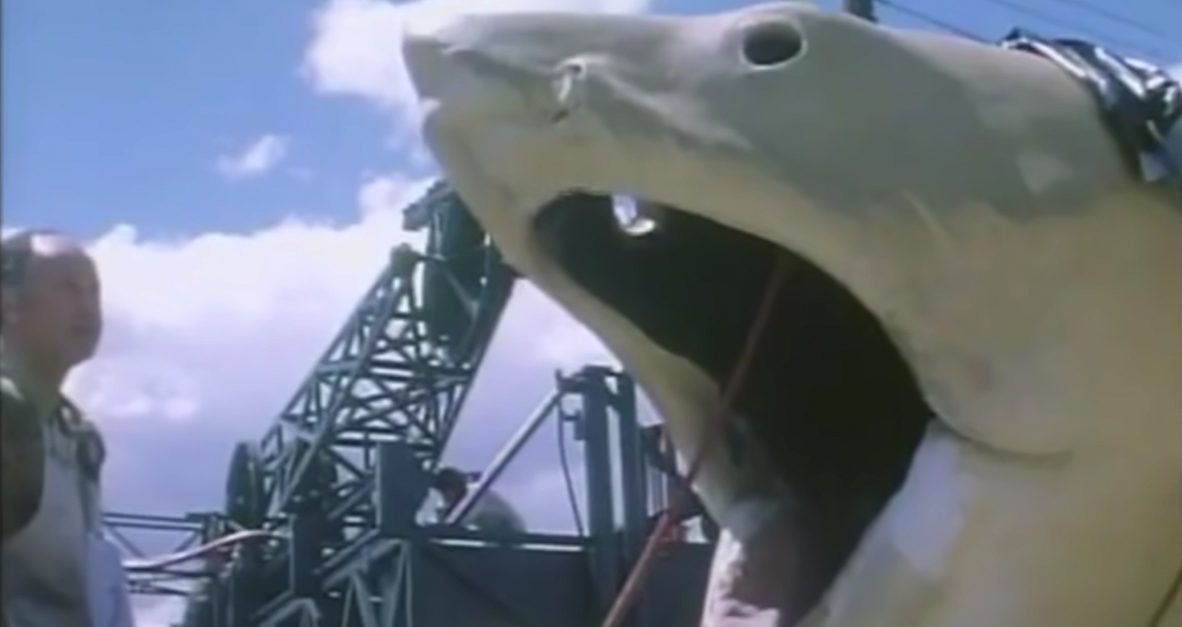
The film’s producers originally wanted to defy the laws of nature and train up a real great white shark for use in the film. Luckily for them, they soon realised it’s impossible to train a shark to perform tricks, so they had to put their heads together and come up with a different, more practical solution.
Spielberg was just 26 when he was hired to direct the film
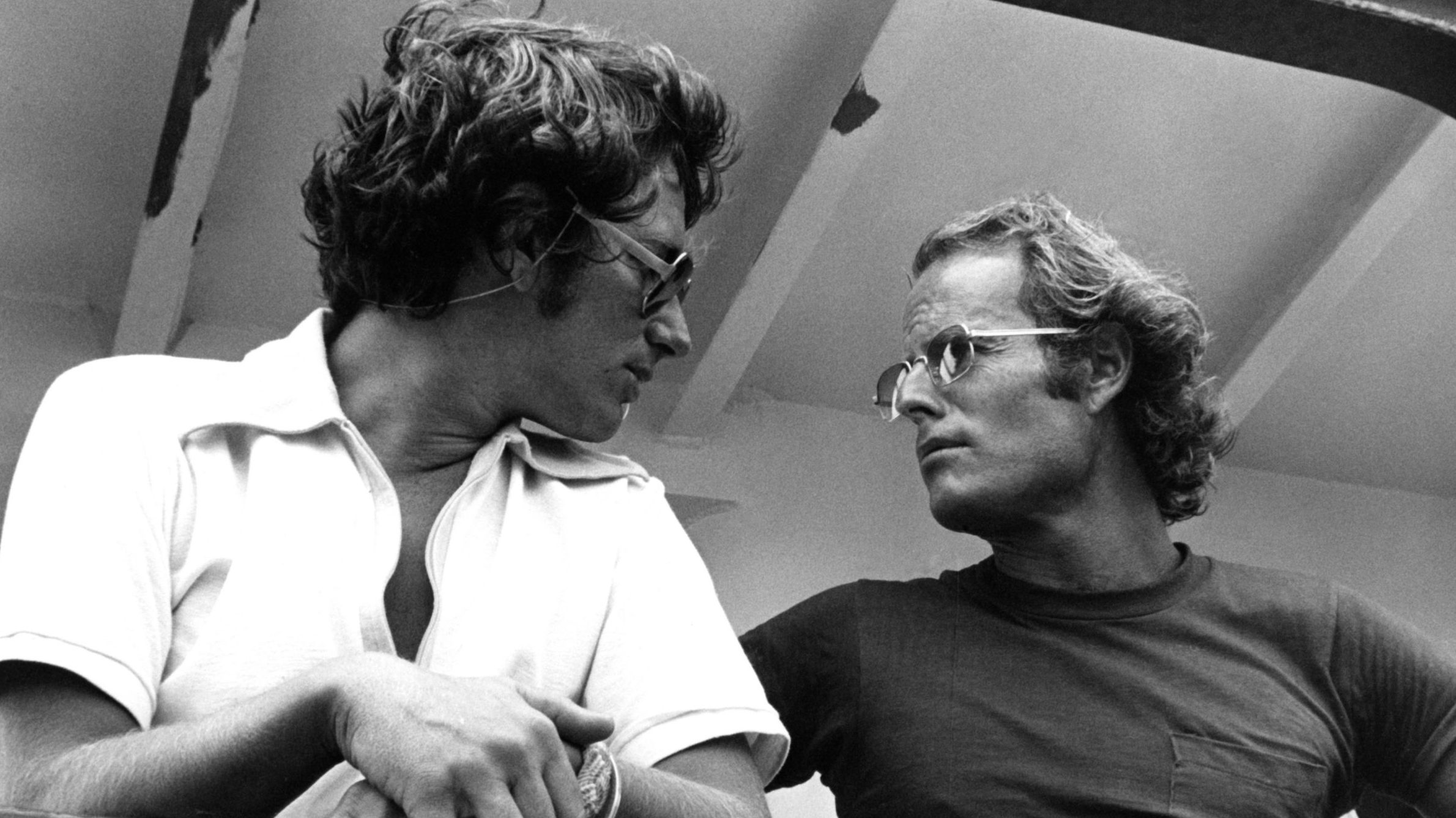
Steven Spielberg was just 26 years old when he was selected to direct Jaws, and he had only worked on two previous projects. The first of these, 1971’s Duel, follows an unhinged trucker stalking and terrorising a random driver. Jaws’ producers Richard Zanuck and David Brown felt that this was thematically similar enough to qualify Spielberg for the movie after their first choice was dropped.
The USS Indianapolis massacre actually occurred in real life
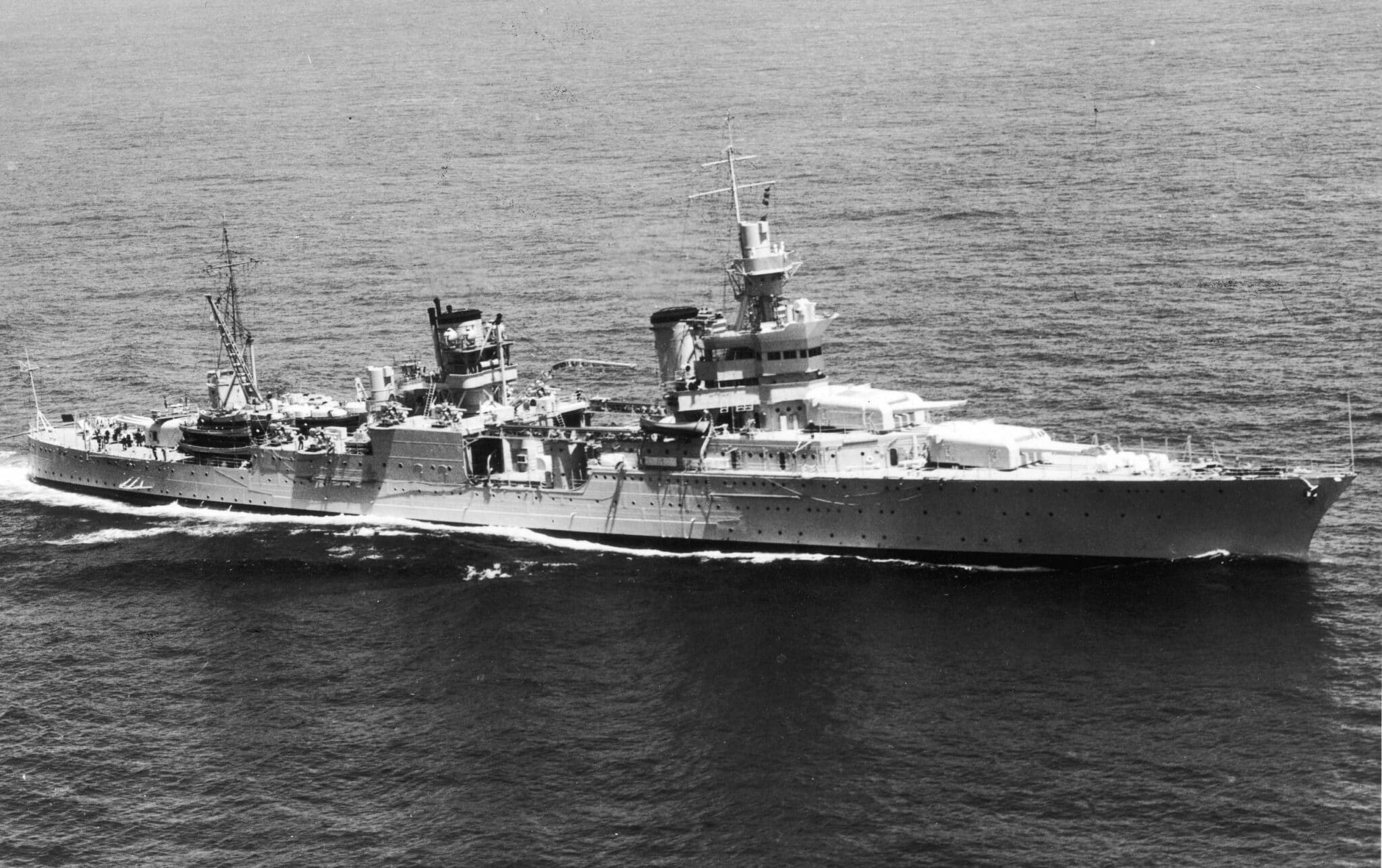
Quint’s iconic USS Indianapolis speech (written by uncredited screenwriter John Milius) was actually based on a real historical event. The ship was sunk off the coast of the Philippines by two Japanese torpedoes, and of the 1,196 crew members onboard, only 316 survived. 300 died during the sinking, while 579 men died from heat exposure, dehydration, drinking salt water and – of course – shark attacks.
Richard Dreyfuss was bullied by Robert Shaw on set
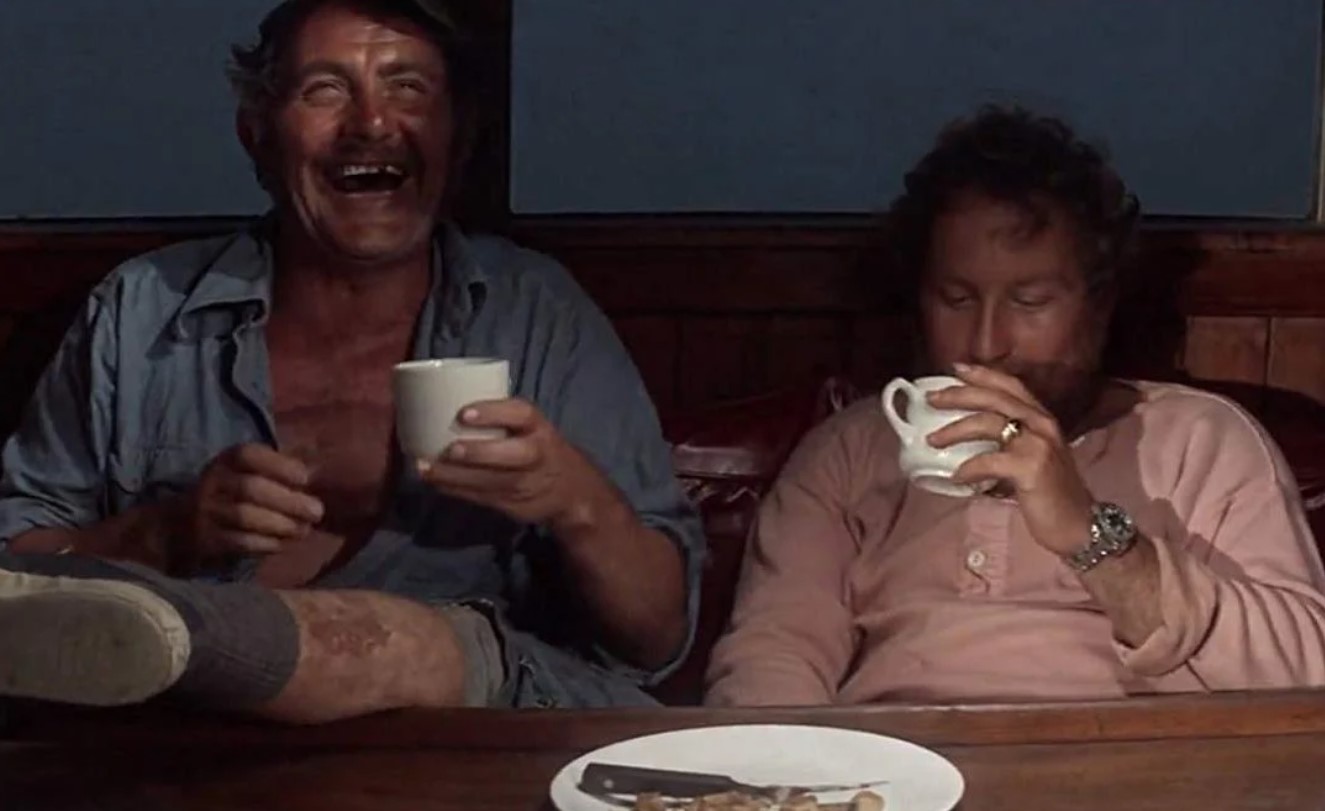
Dreyfuss didn’t have many complaints about his time on the set of Jaws, except the bullying he received from Robert Shaw. Calling him a coward, Shaw offered Dreyfuss $1,000 to climb the Orca’s 75ft mast and jump off into the ocean. Spielberg intervened, telling Dreyfuss, “I don’t care how much money he offers you, you’re not jumping off the mast, not in my movie.”
Hooper was supposed to have an affair with Brody’s wife
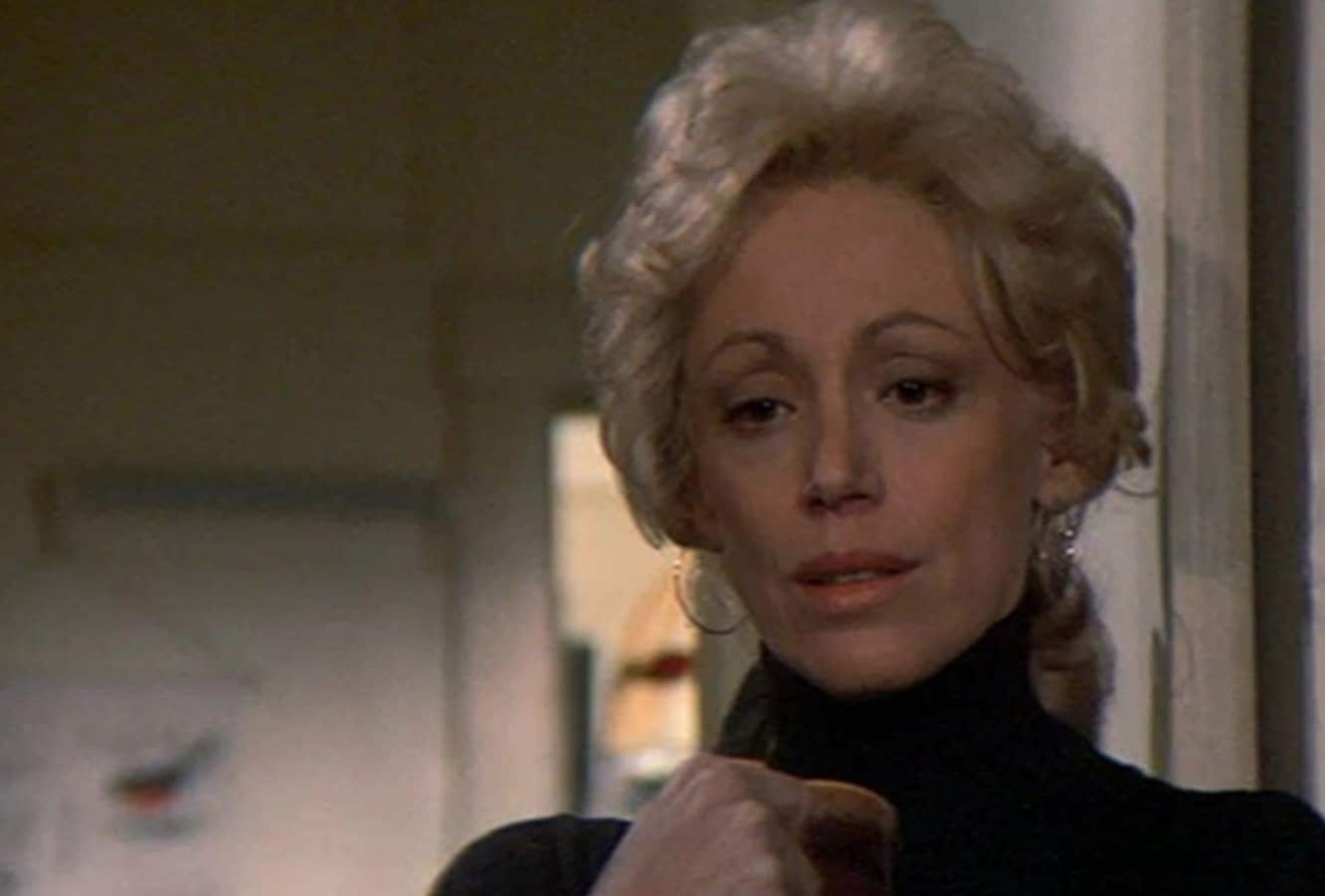
In Peter Benchley’s original novel, the action surrounding the shark is accompanied by an illicit affair between Matt Hooper and Ellen Brody. Benchley admitted later he added this subplot simply to ‘sex up’ his novel, and agreed with the filmmakers that it was completely irrelevant, hence it was left out of the script entirely. In the final film, Matt and Ellen only share one scene.
The novel was based on real events
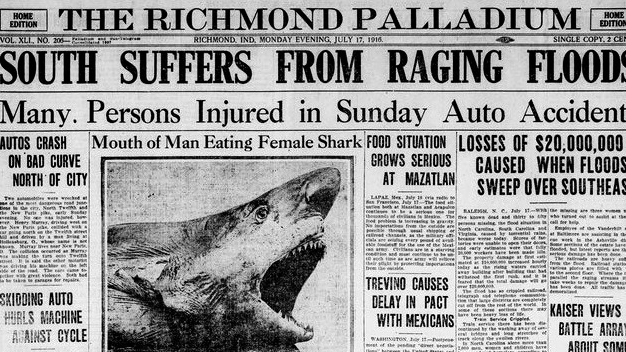
Peter Benchley had a lifelong fascination with sharks, and he was inspired to write the novel that Jaws is based on by events that really happened. In 1916, four people were killed and one was seriously injured in a string of shark attacks that took place along the coast of New Jersey. While the responsible specimen was never definitively identified, experts believe it was likely a bull shark.
The original director was fired for not knowing the difference between sharks and whales
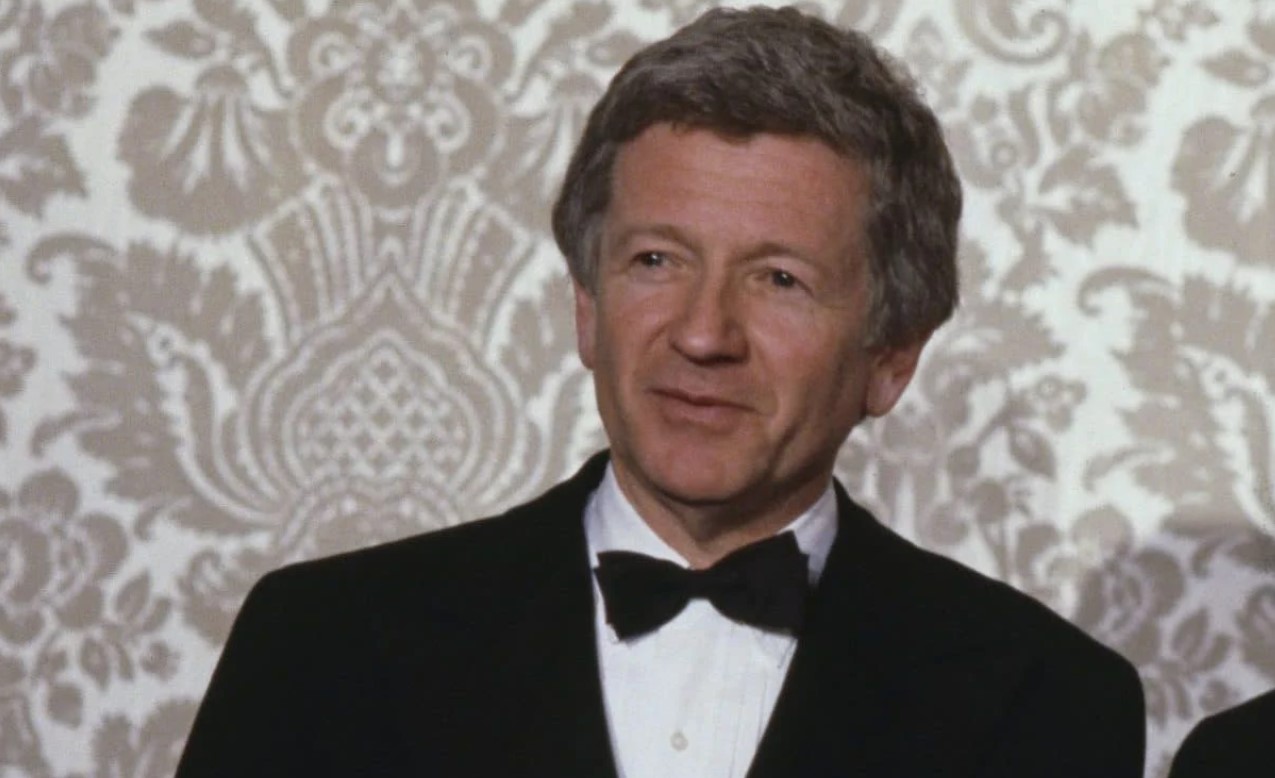
Originally, Jaws was set to be directed by Dick Richards (Farewell, My Lovely), but his first meeting with producers and studio executives went poorly. While explaining his vision for the film, Richards kept calling the shark a whale, and it became apparent that he didn’t understand the difference between the two mighty sea animals. The producers explained they weren’t make Moby Dick and fired him.
The film’s most famous line was completely ad-libbed
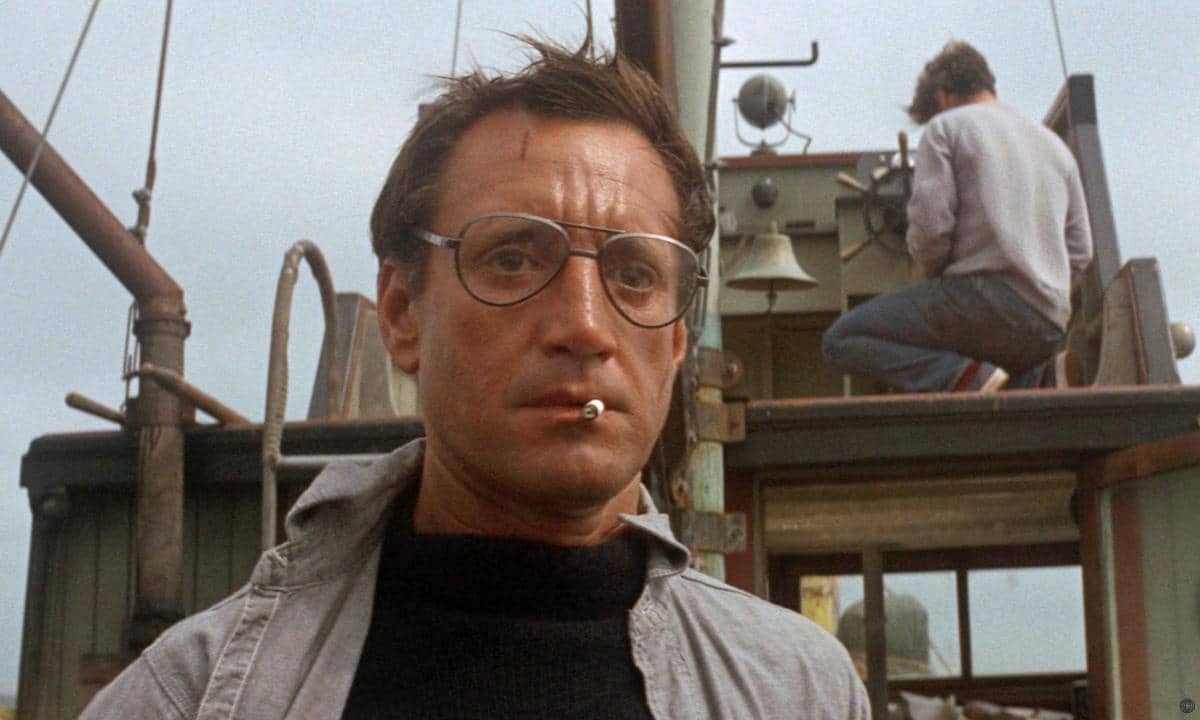
Jaws has plenty of famous speeches throughout the course of the movie. But far and away one of the most famous quotes from the film is when Martin Brody tells Quint: “You’re gonna need a bigger boat”. Did you know that this wasn’t in the original script at all? Apparently Brody actor Roy Scheider ad-libbed the line on the day of the filming.
Spielberg pulled a prank on George Lucas which completely backfired
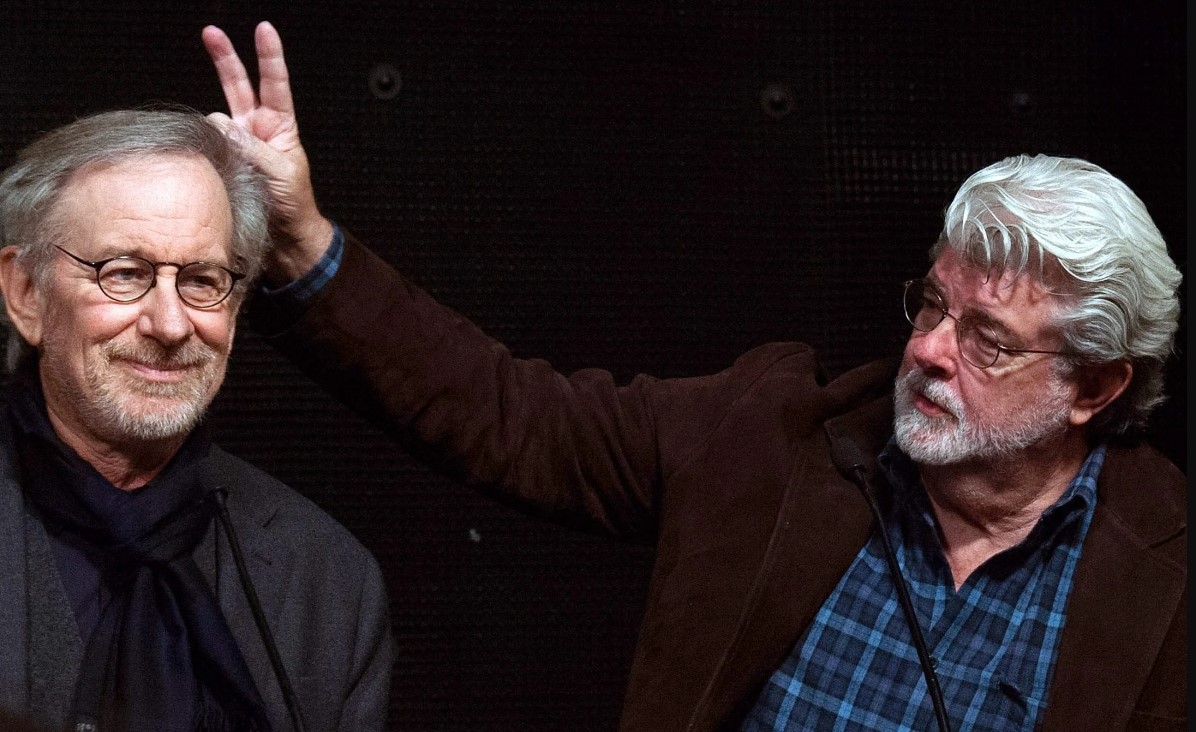
When George Lucas visited the Jaws set, he decided to stick his head in the open mouth of the robot shark, and for fun Spielberg snuck over to the controls and clamped the jaws shut. Unfortunately, this backfired when the shark head malfunctioned and Lucas remained stuck in the mouth. Eventually Lucas got free, but not without inflicting some minor damage on the expensive prop.
Robert Shaw’s alcoholism caused problems on set
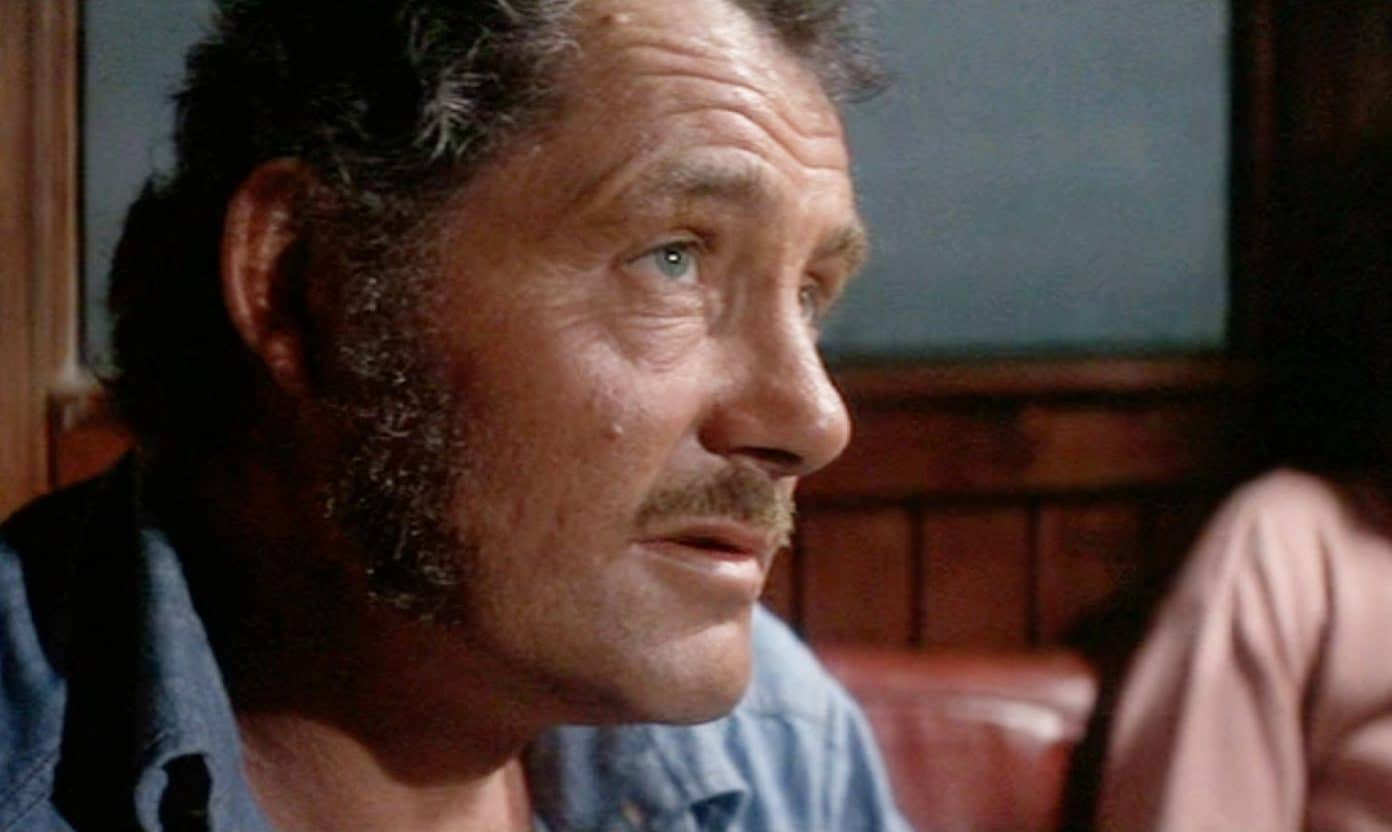
Quint actor Robert Shaw was an alcoholic. This caused problems during the Jaws production, prompting tension with his co-stars and crew. Things came to a head during the shooting of the celebrated USS Indianapolis monologue, when Shaw was so drunk he couldn’t complete the scene. Ashamed, the next day Shaw apologized to Spielberg for one more try, resulting in the electrifying rendition that made the final film.
Charlton Heston refused to ever work with Spielberg after he was snubbed for Chief Brody
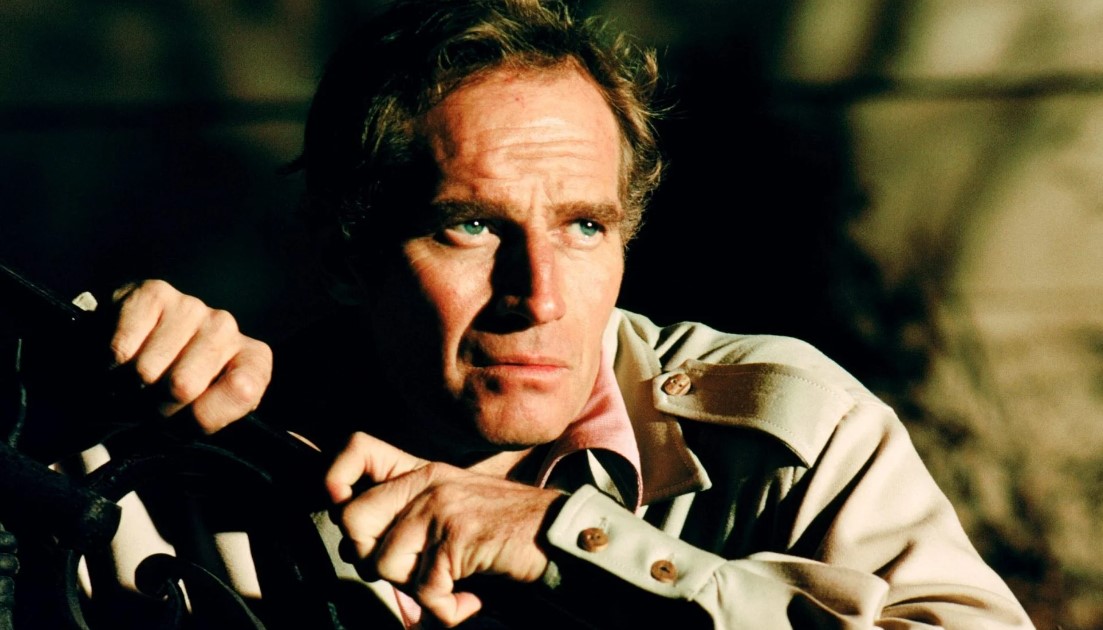
Screen legend Charlton Heston was a contender to play Amity Island Police Chief Martin Brody, but he lost out on the part to the comparatively unknown Roy Scheider. Heston didn’t react at all well when he found out, publicly criticizing Spielberg and vowing never to work with him. True to his word, they never collaborated; Heston even refused a role Spielberg offered him in 1941.
Mass hysteria about sharks took over after the film was released
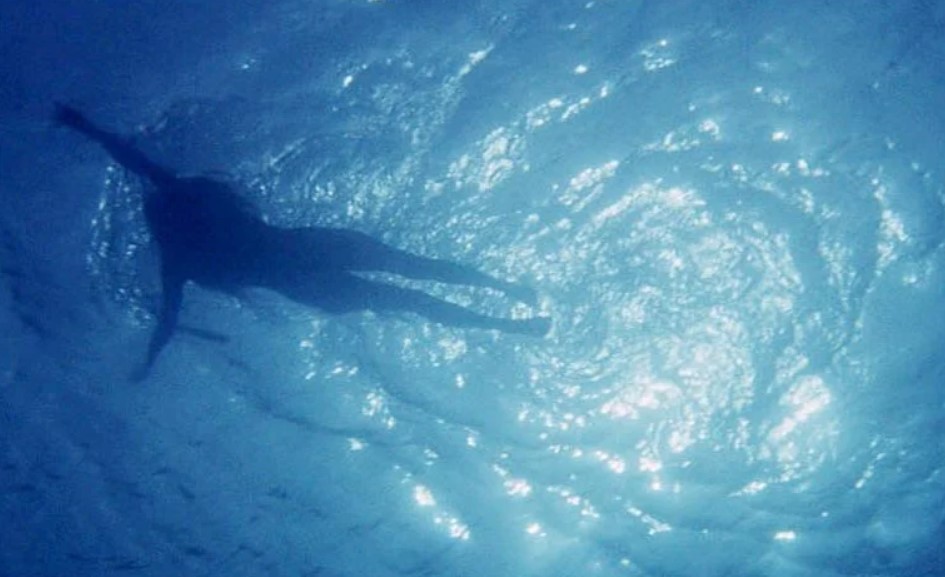
After Jaws opened in 1975, a bizarre mass hysteria took hold involving sharks. This wasn’t sharks attacking humans, however, but sharks being killed by overzealous members of the public. People were so jumpy that sharks weren’t the only sea creatures suffering: one ugly incident occurred in Florida, when a beached pygmy sperm whale was beaten to death by onlookers who mistook it for a shark.
The plot of Jaws basically occurred in real life in Egypt

Jaws doesn’t portray typical shark behavior, yet some eerily similar incidents occurred in 2010, when Egyptian holiday resort of Sharm El Sheikh suffered several fatal shark attacks. Unfortunately, local authorities were similarly ineffectual as those in the movie, initially denying the problem and refusing to close any beaches, resulting in more deaths. Happily, this shark wasn’t hunted down: it moved on of its own accord.
Spielberg initially thought John Williams’ theme tune was a joke
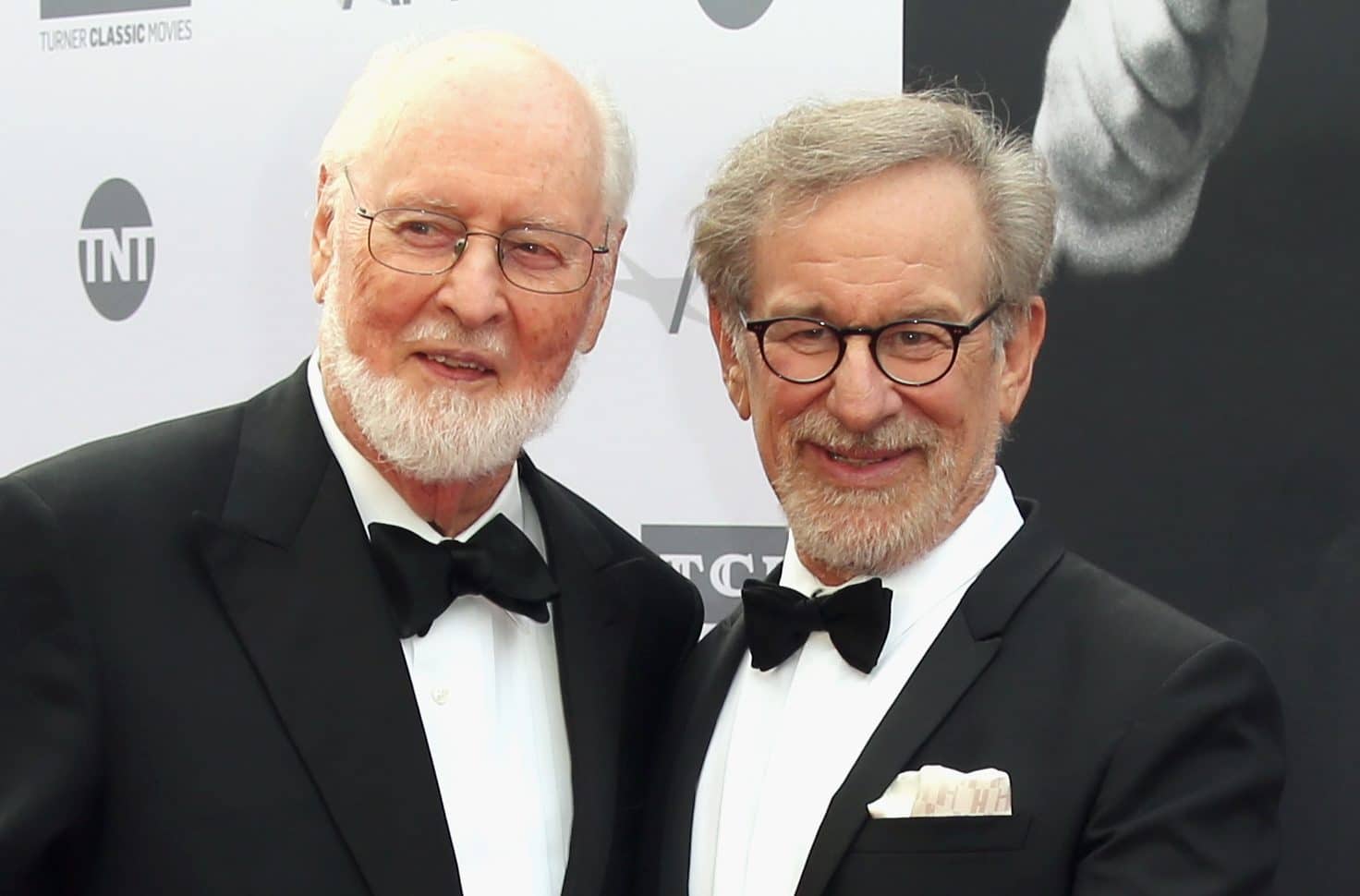
The Jaws theme tune from veteran composer John Williams is one of the most recognisable and simple pieces of film music ever, utilizing just two notes. When Steven Spielberg first heard it he laughed and said “That’s funny, John, really; but what did you really have in mind for the theme?” Despite this reaction, the director later admitted the theme was key to Jaws’ success.
Roy Scheider had to put up with being slapped over 17 times
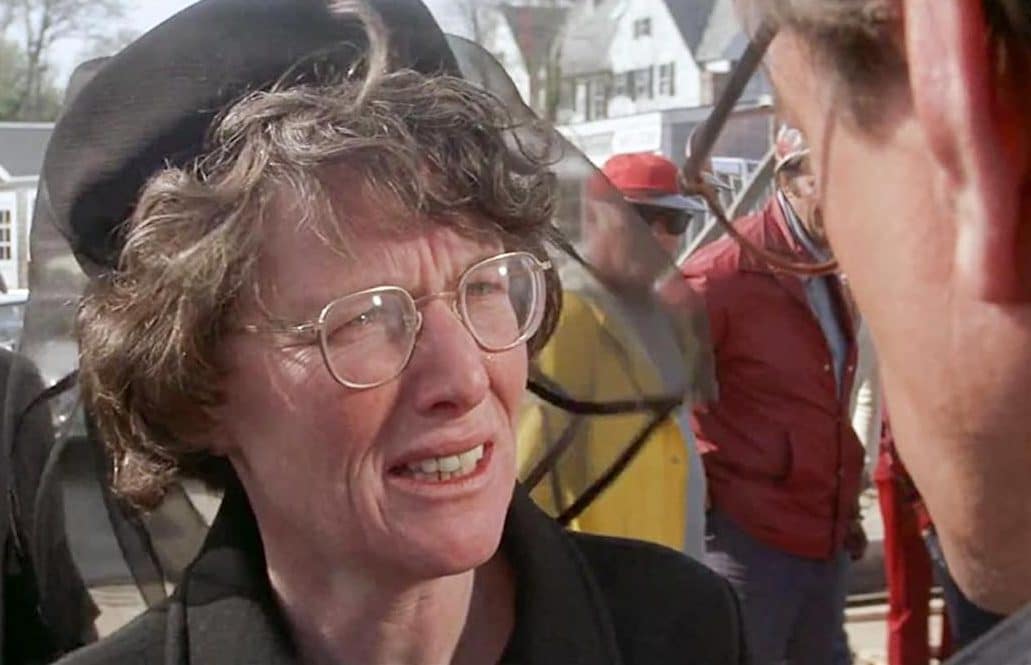
Before Lee Fierro gives her emotional monologue to Roy Scheider’s Chief Brody, she slaps him in the face. This was rough for Scheider, because Fierro wasn’t an experienced film actress and didn’t know how to do fake slaps. This meant that every single one of the slaps that were filmed actually hit Scheider full in the face – and they wound up shooting more than 17 takes!
Hooper was originally supposed to die
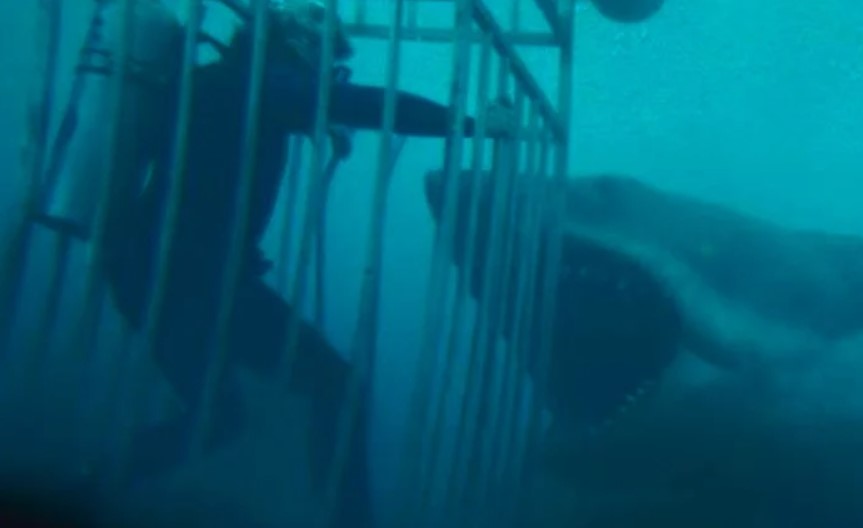
You might not have known that Richard Dreyfuss’ Hooper was originally supposed to die. He was only saved by some real-life underwater footage of an actual great white attacking a cage. The shark became tangled in some rope and got so agitated that it smashed the cage to bits. Spielberg loved this, so he had the script rewritten accordingly, giving Hooper a dramatic escape.
Roy Scheider was cast after overhearing Spielberg talking about the film at a party
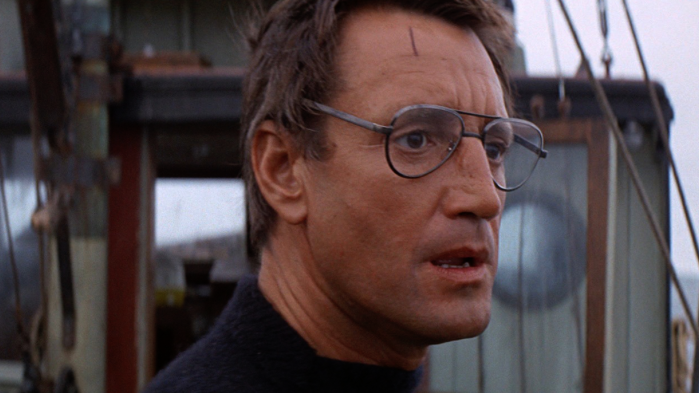
Roy Scheider was at a Hollywood party when he overheard Steven Spielberg telling a friend about the sequence in which the shark explodes out of the ocean and lands on Quint’s boat. Intrigued, Scheider directly asked Spielberg if he could be in the film, and he eventually went on to land the lead role of Captain Brody.
Robert Shaw based Quint on a real local fisherman
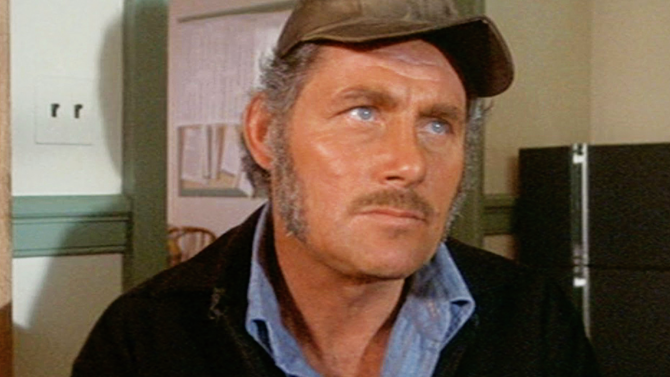
While working on getting into character as Quint, Robert Shaw sought the advice of Craig Kingsbury, a Martha’s Vineyard fisherman who played the role of Ben Gardner in the film. Kingsbury coached Shaw on the accent and mannerisms of a real east coast fisherman, and provided him with old sea stories that Shaw then used while improvising dialogue.
The pain on swimming girl Susan Backlinie’s face was real
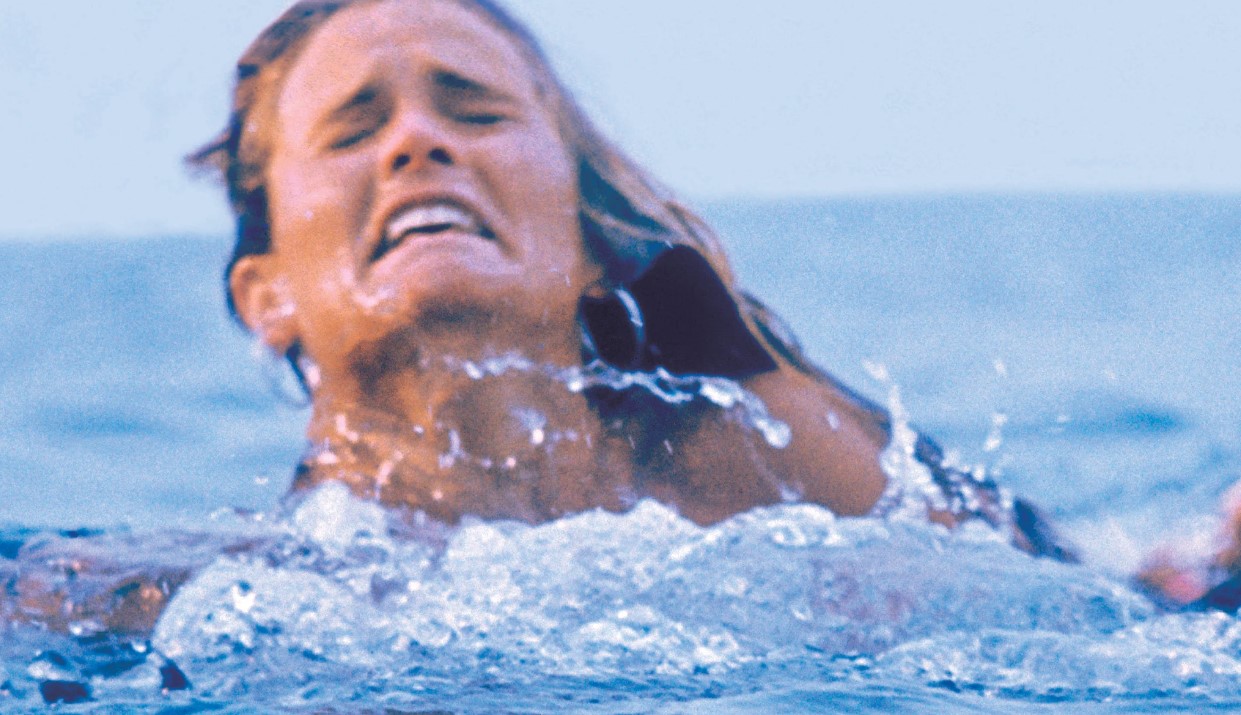
Actress and stunt performer Susan Backlinie played Chrissie Watkins, the shark’s first victim. This was a grueling experience, as Watkins had to be repeatedly pulled underwater and dragged around. To achieve this, the effects team attached two 300-pound weights to Backlinie’s waist and literally dragged her back and forth. The pain on Backlinie’s face is genuine, due to these weights digging into her ribs.
Tax dodger Robert Shaw had to flee the country once his scenes were completed
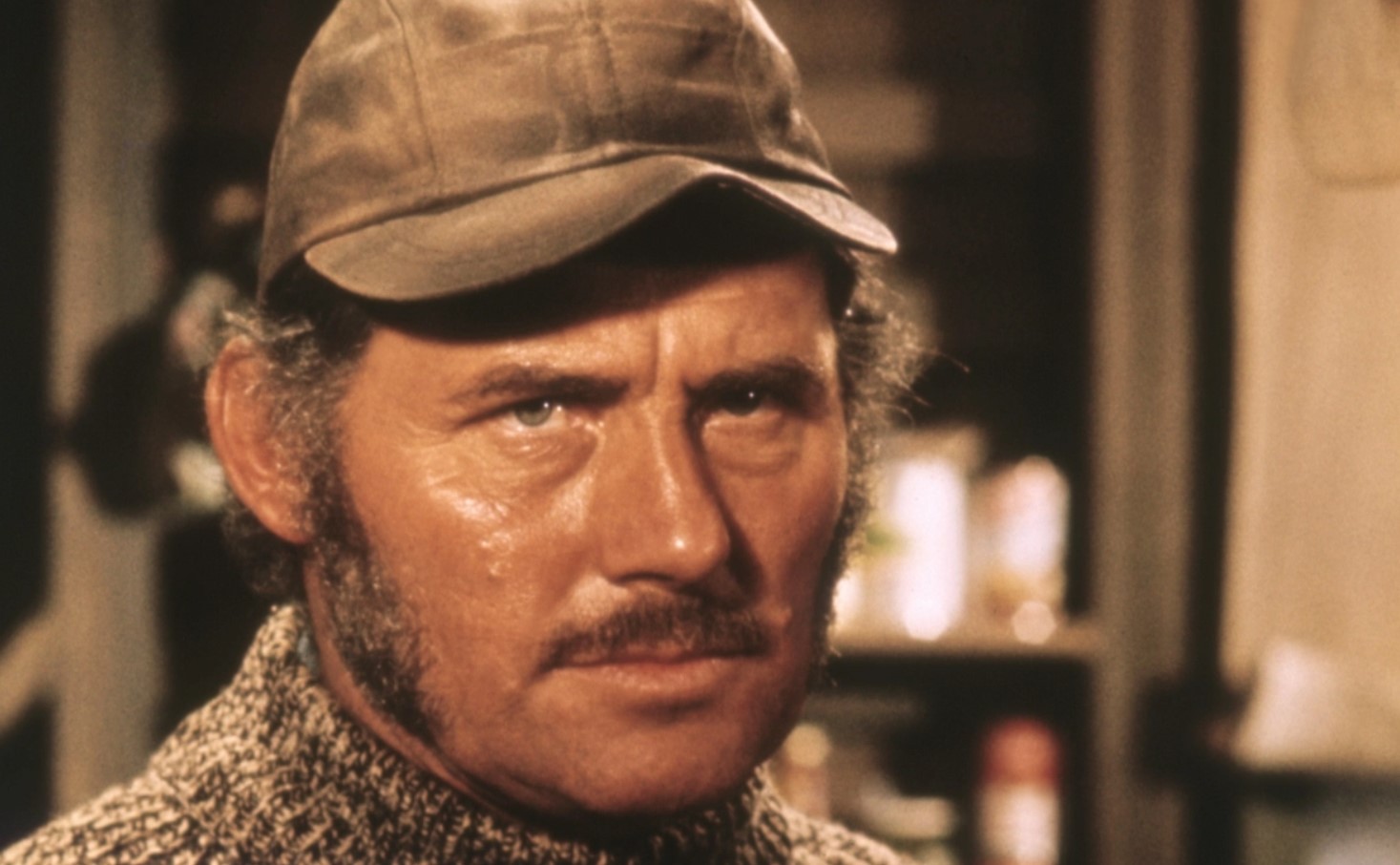
On top of his alcohol problems, Robert Shaw was also being investigated for tax evasion. He was only allowed to spend a certain amount of time in America, otherwise he would face a tax liability. To get around this, Shaw flew to Canada on his days off. In the end Shaw had to give all of his Jaws salary to the IRS to avoid jail.
One shot was cut for being too gruesome
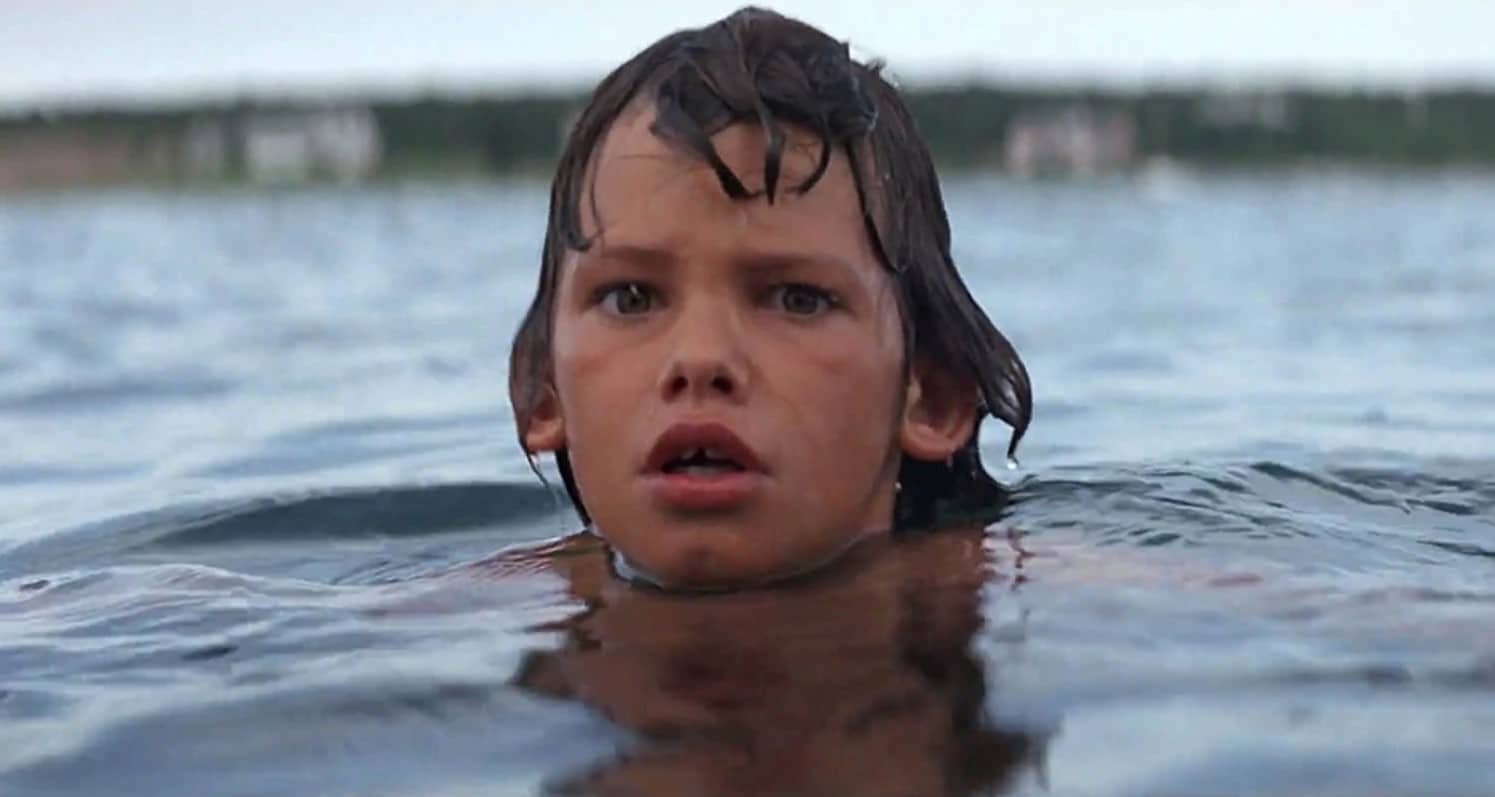
Jaws’ shark attacks are very scary, but one moment proved too much. In the movie, Brody’s son is swimming and freezes in terror as the shark approaches. As originally shot, a man would have pushed the boy out of the way, and his bloodied upper torso would have been seen dragged along by the shark. This was cut for being too gory for the film’s preferred PG rating.
Spielberg has admitted he should never have shot the film at sea
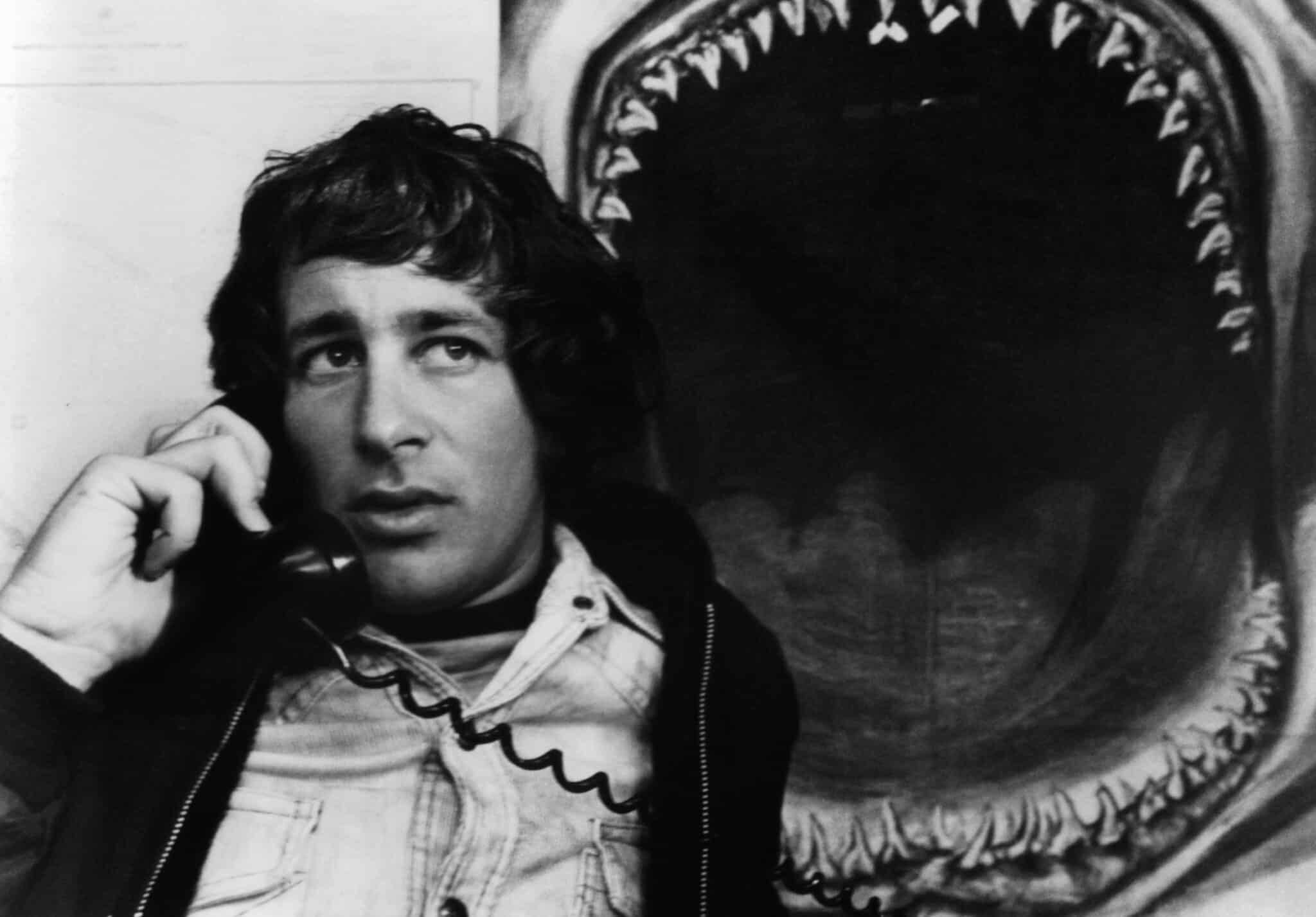
Spielberg admits making Jaws was a real learning curve for him, and he blames many of the production’s issues to his own perfectionism and inexperience. The biggest issue, Spielberg says, was his insistence on shooting at sea with an actual life-sized shark:”I could have shot the movie in the tank or even in a protected lake… I was naive about the ocean, basically.”
The robotic sharks cost a quarter of a million dollars each
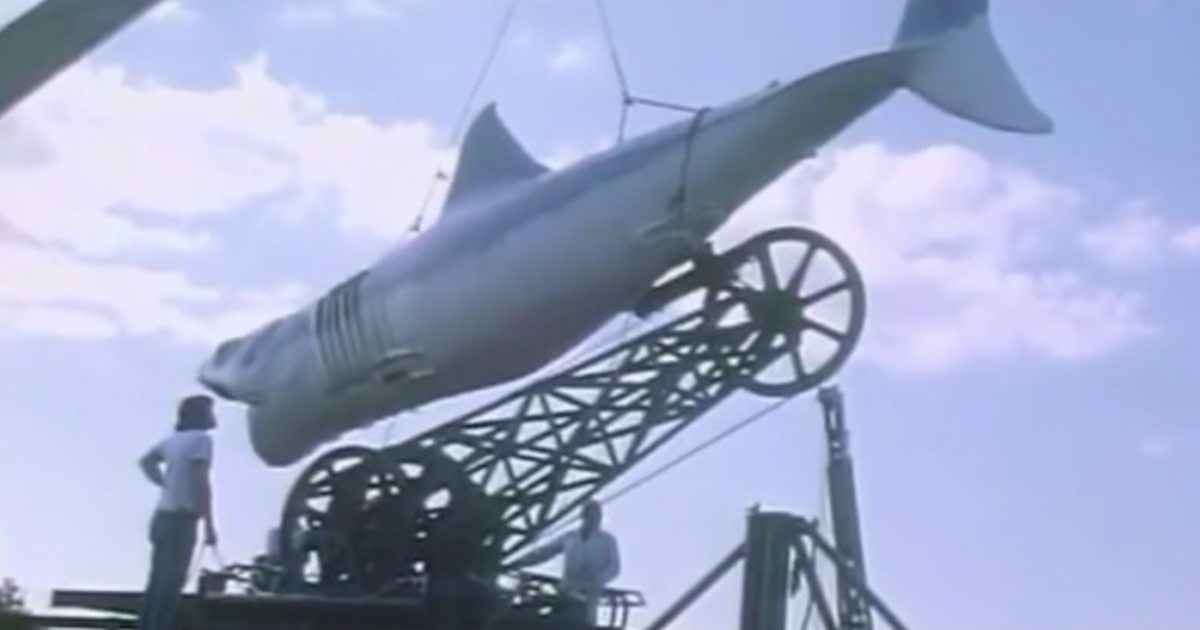
Director Steven Spielberg eventually decided that they would have to build three giant robotic sharks for the film. These were built at considerable expense, with a whopping $250,000 price tag apiece. Spielberg famously decided to nickname the sharks ‘Bruce,’ in honor of his lawyer Bruce Raynor.
Spielberg fled the final day of filming to avoid getting pranked
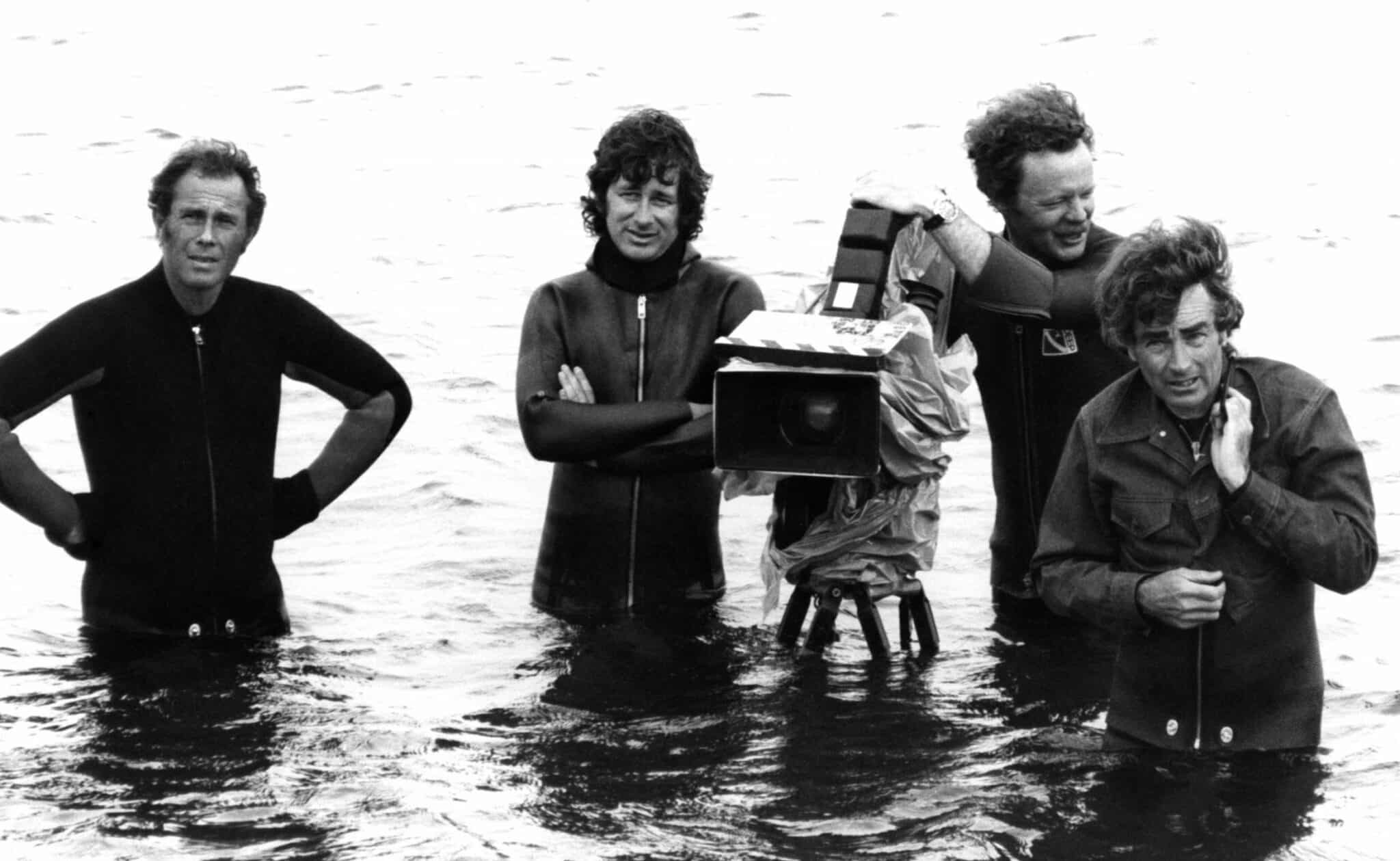
On the last day of shooting, Spielberg overheard rumours that his crew was planning on dunking him under water as revenge for the chaos of production. To avoid this, the director snook off on a plane to Boston while the final shot of the shark exploding was being filmed. He missed the epic explosion in action because he was so paranoid about getting dunked.
The Jaws sequel was originally going to tell the story of the USS Indianapolis
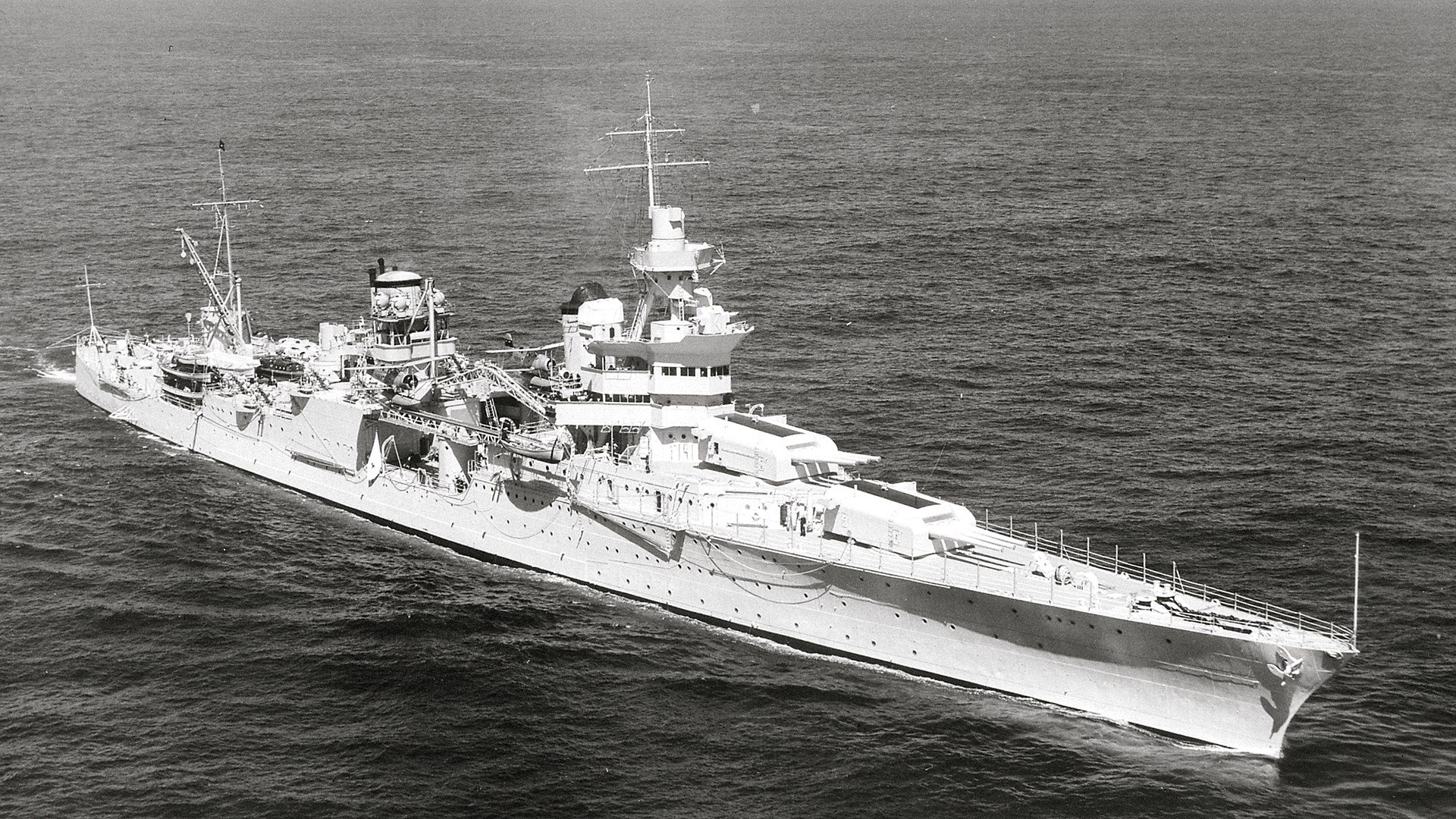
The original idea for a Jaws sequel was to tell the real-life story of the USS Indianapolis – which Quint recounts in his famous monologue – and Steven Spielberg was initially approached to direct. Ultimately, the director decided he didn’t want to be involved, and Jeannot Szwarc stepped up to make a sequel that picked up after the events of the first film.
Roy Scheider pretended to be insane to get out of making Jaws 2
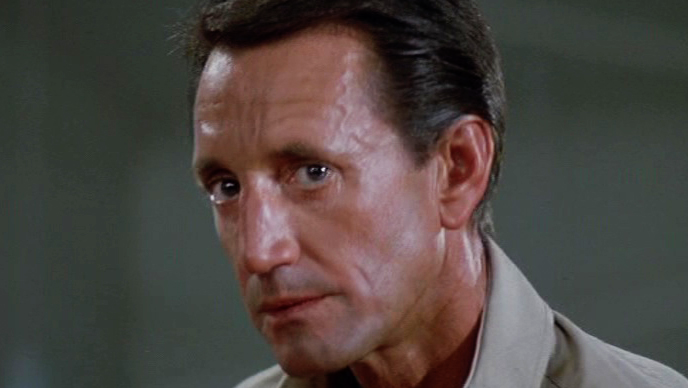
Roy Scheider was extremely reluctant to reprise his role as Captain Brody for the Jaws sequel, but the studio used his contract to strong-arm him into starring. The actor was so miserable working on the film that he even staged an outburst at The Beverly Hills Hotel and claimed insanity in a bid to be released from his contract, but his ploy was ultimately unsuccessful.
The climactic blowing up of the shark required an explosives expert
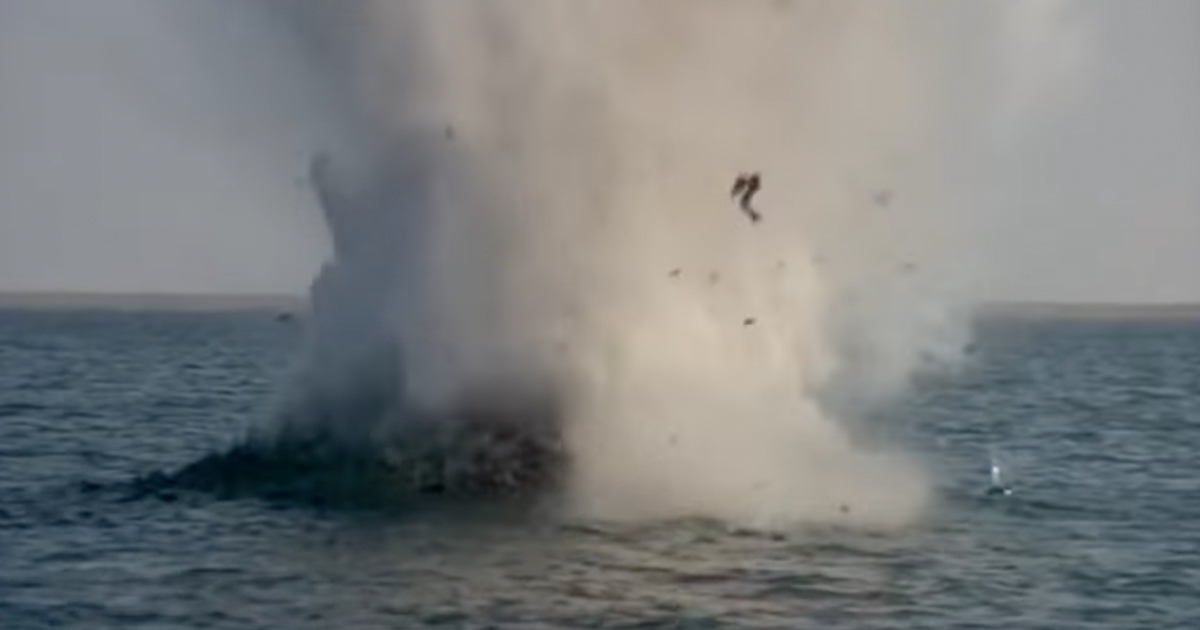
For the climactic destruction of the shark, explosives expert Richard S. Edwards was hired, and the job proved a challenge. Edwards had to carefully place dynamite in the mouth of a fake shark, and had to wrap his knees with towels and wear heavy gloves to get far enough into the prop, cutting himself on sharp fibreglass in the process.
There’s a sneaky reference to James Bond hidden in the film
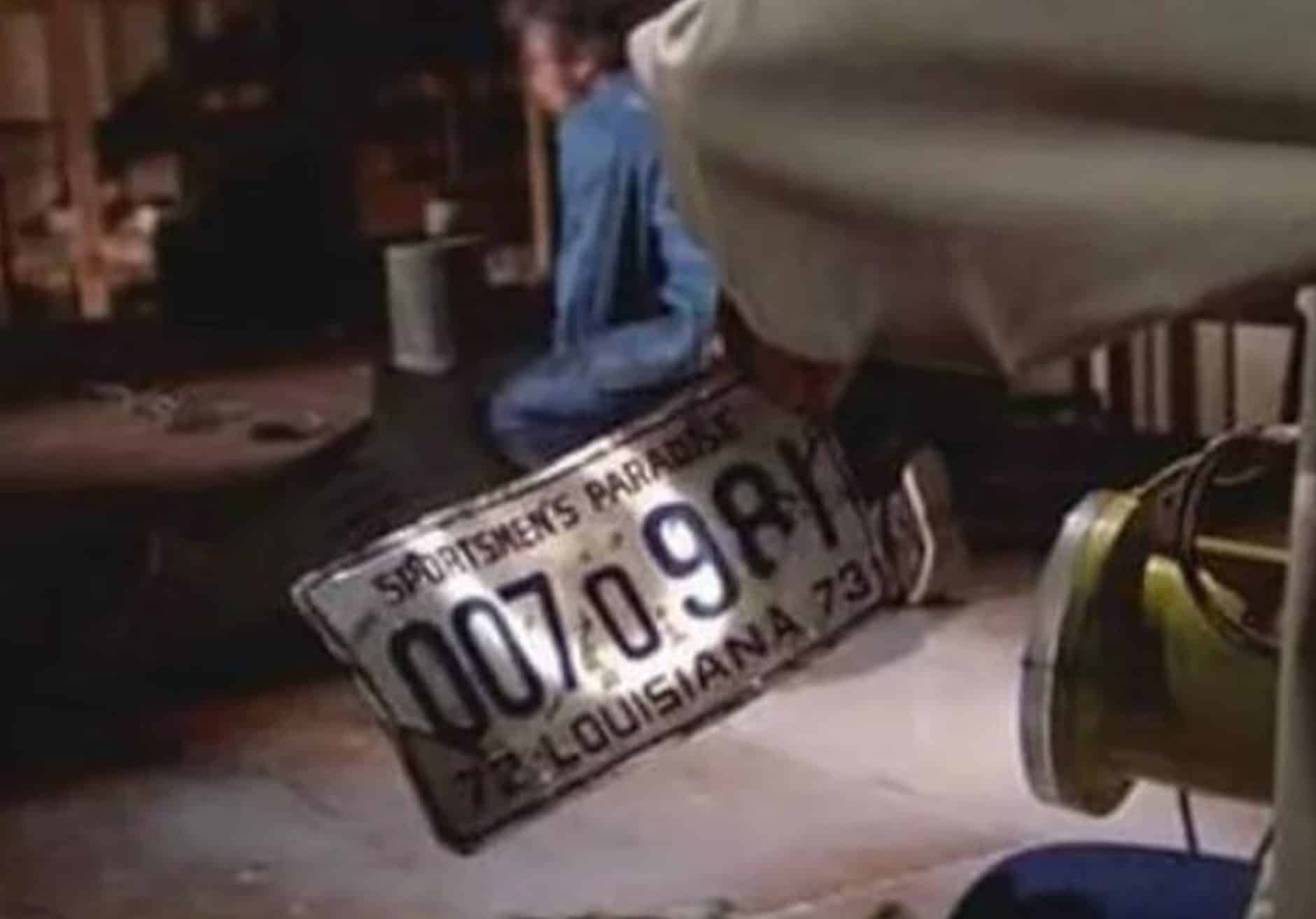
Spielberg made no secret of the fact that he always wanted to direct a James Bond movie (although he never did). The young filmmaker decided to include a Bond Easter Egg to pay tribute to the famous franchise. When the car’s licence plate is pulled up from the wreckage, it reads 007 981 – a cheeky nod to the British secret agent’s famous code number.
Spielberg added Ben Gardner’s severed head to really scare the audience
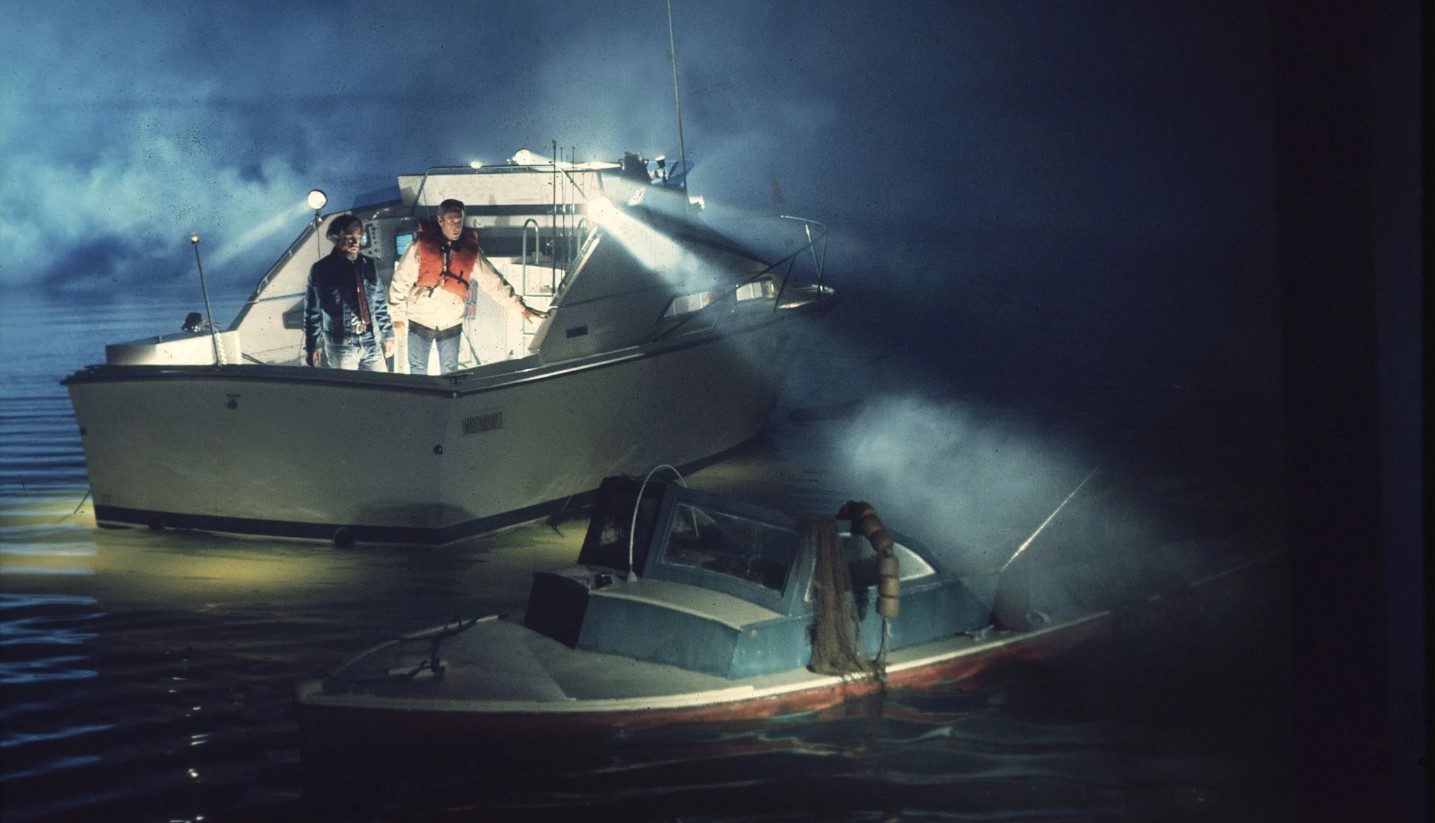
The scene where Hooper is shocked by Ben Gardner’s head rolling into view in the sunken boat was not in the original script. Spielberg added the moment as he saw the opportunity to add one big scare, and it got a huge reaction from test audiences. Many critics have declared this moment one of the greatest ‘jump scares’ ever put on film.
It was the biggest box office hit ever at the time
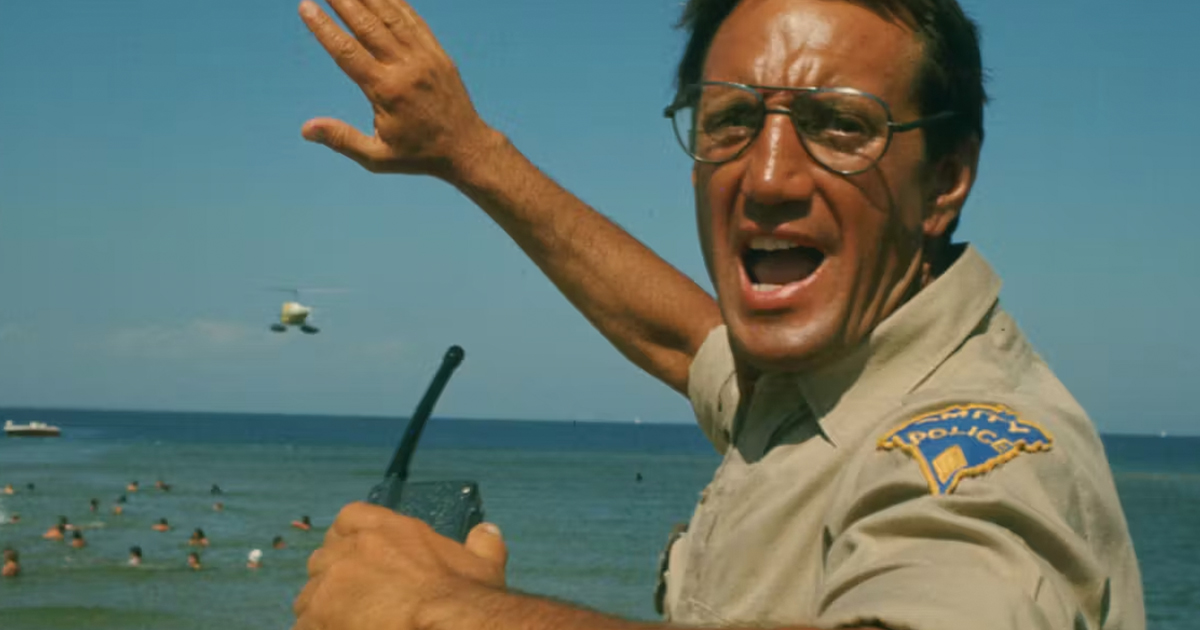
Jaws wound up earning $476.5 million at the worldwide box office. By today’s standards, this might not necessarily seem like real blockbuster money, but back in 1975 it was truly unprecedented; no film beforehand had ever earned over $100 million at the US box office alone. Jaws would be the highest-earning film in box office history until 1977’s Star Wars broke its record.
The film could have been called something else
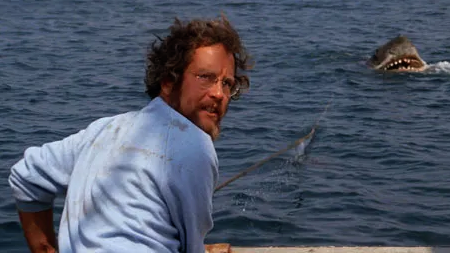
Peter Benchley, whose 1974 novel Jaws served as the inspiration for the movie, almost gave his book a different name. Contenders for the title included The Silence of the Deep, The Stillness in the Water, Leviathan Rising, and The Jaws of Death. Presumably, if Benchley had gone with one of these decidedly less punchy options, the movie would have copied it.
The film’s iconic line is often misremembered
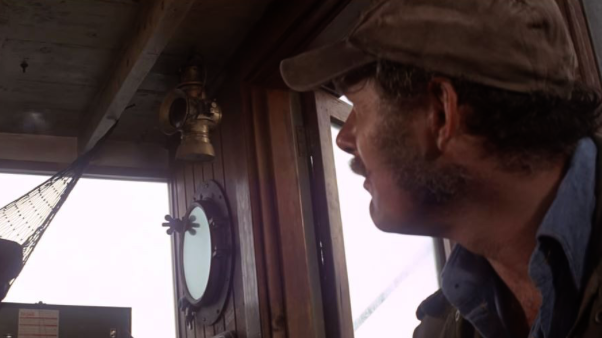
The improvised line in which Roy Scheider’s character Brody – having just laid eyes on the shark for the first time – remarks “you’re gonna need a bigger boat,” is often misremembered as “we’re gonna need a bigger boat.” In fact, it’s one of the most famously misremembered movie lines, right up there with Darth Vader saying “no, I am your father” rather than “Luke, I am your father.”
Gregory Peck forced a scene to be cut from the film
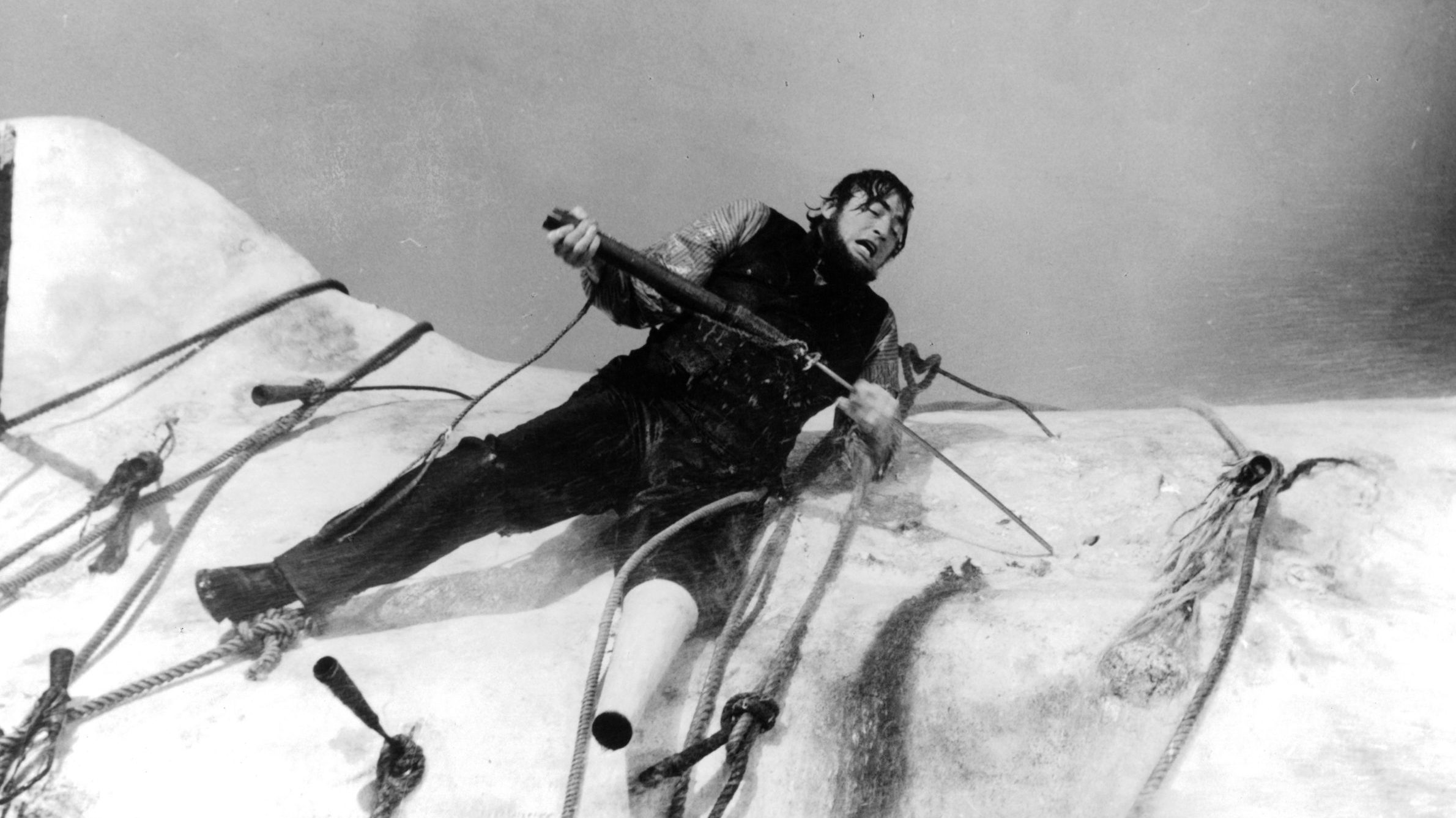
Quint was originally supposed to be introduced to audiences after he causes a ruckus in a movie theatre. The film playing in the background of the scene was 1958’s Moby Dick, which was intended to foreshadow the ending of Jaws. Unfortunately, actor Gregory Peck owned the rights to the Moby Dick film, and he insisted that the scene be cut.
Steven Spielberg cameos in the film
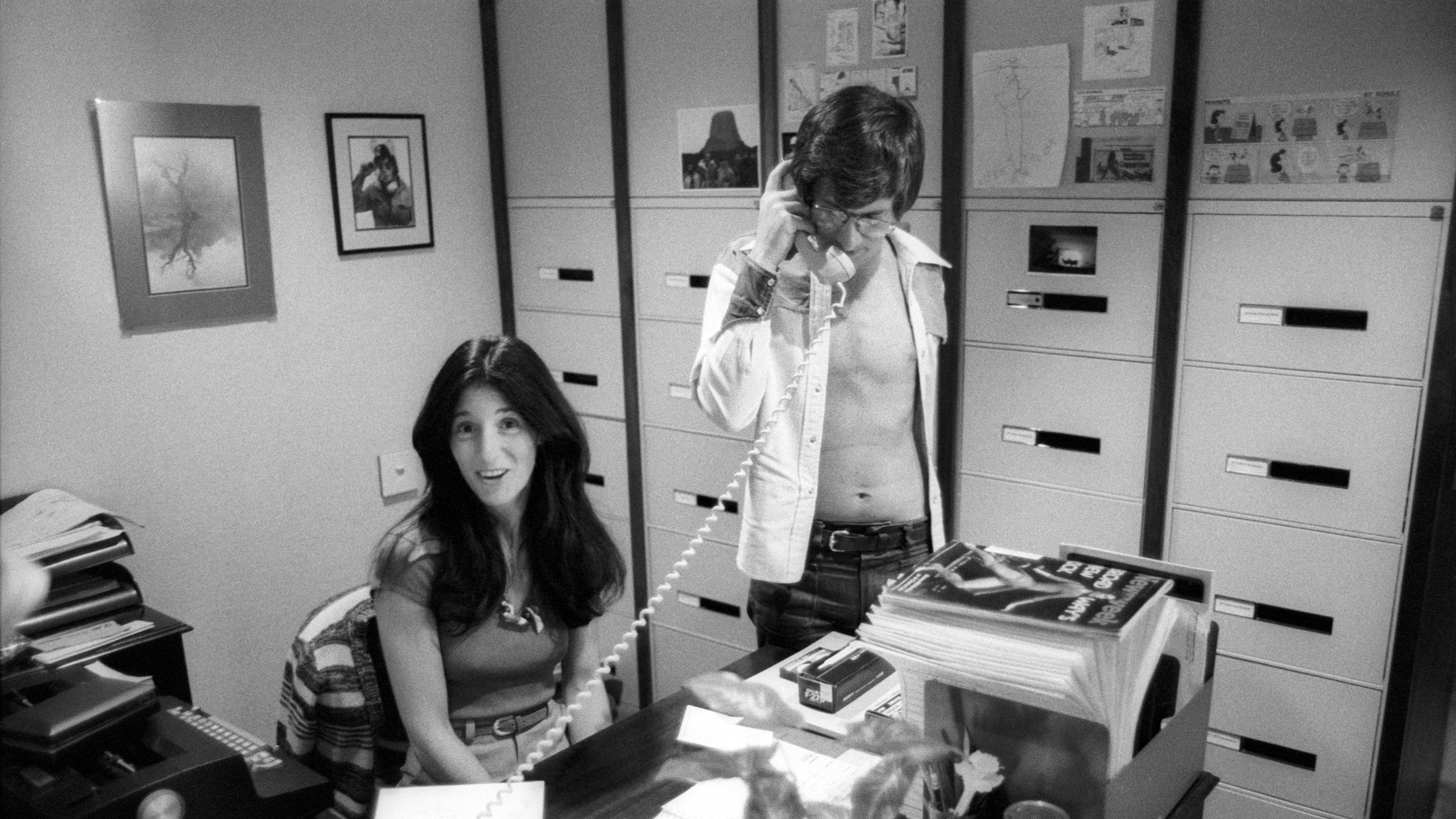
It’s not unusual for directors to insert themselves into their films, and Steven Spielberg is no exception. While he doesn’t appear in Jaws visually, his voice can be heard in the form of the Amity Island dispatcher who calls Quint’s boat, the Orca, before transferring the call to Brody’s wife.
‘Amity Island’ is actually Martha’s Vineyard
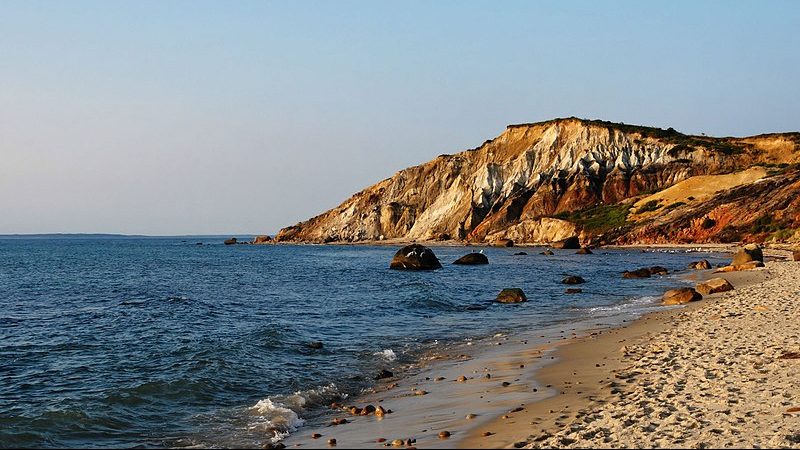
The fictional beach resort of Amity Island is actually Martha’s Vineyard, a Massachusetts island that sits just off the coast of Cape Cod. The island’s strict laws prevented the crew from building any sets other than Quint’s shack and the wooden pier, and the vandalised billboard had to be constructed, filmed and removed in a single day to avoid running afoul of the authorities.
Spielberg hated working with the robotic sharks
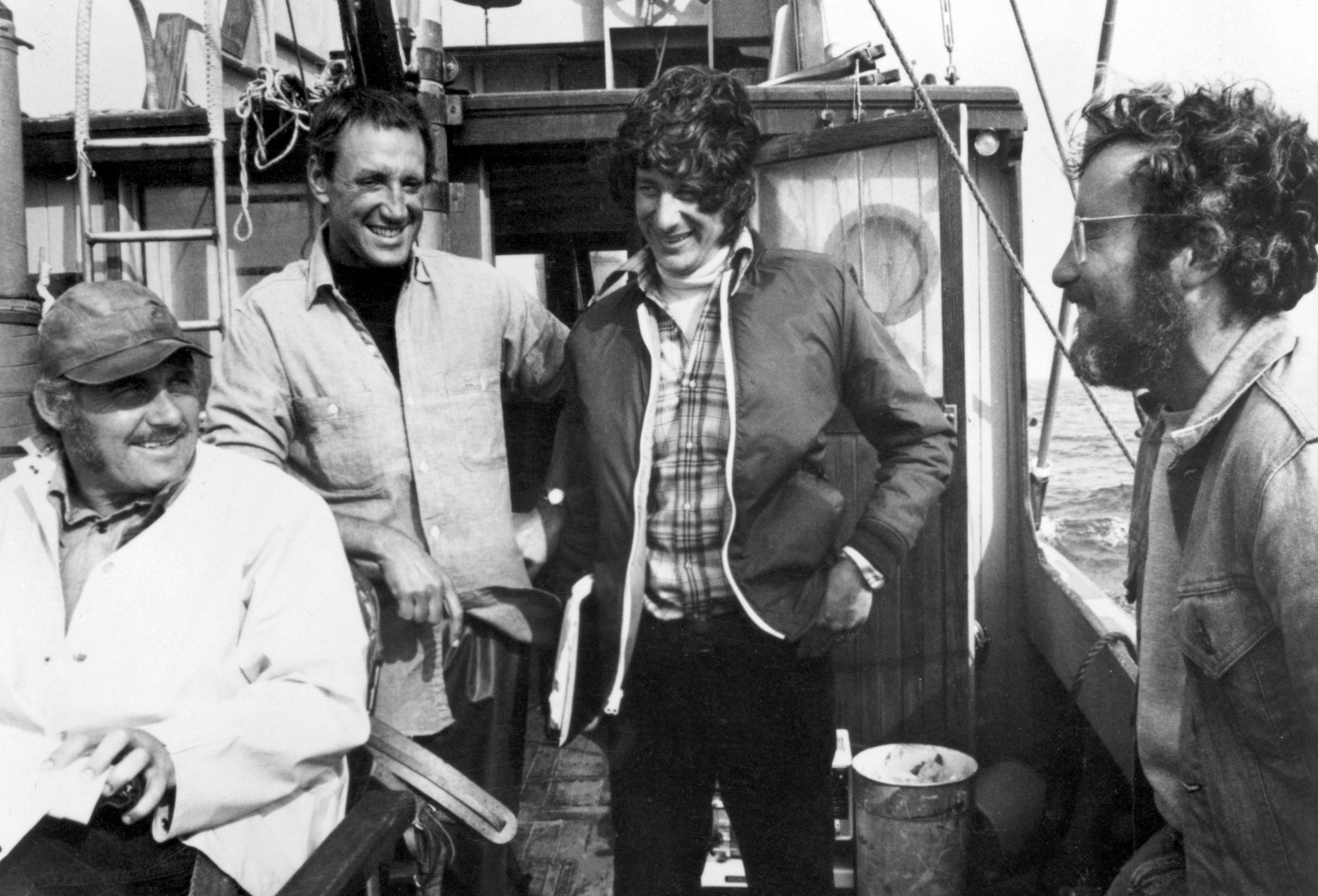
Once those expensive robotic sharks arrived on the Jaws set, Spielberg was very unhappy. Not only did they look fake, they also proved extremely unreliable when put in the water; a significant issue, given much of the film is set at sea. For this reason, the director had to significantly rethink his approach to showing the shark in the film.
Spielberg decided to use tricks to hint at the shark’s presence instead
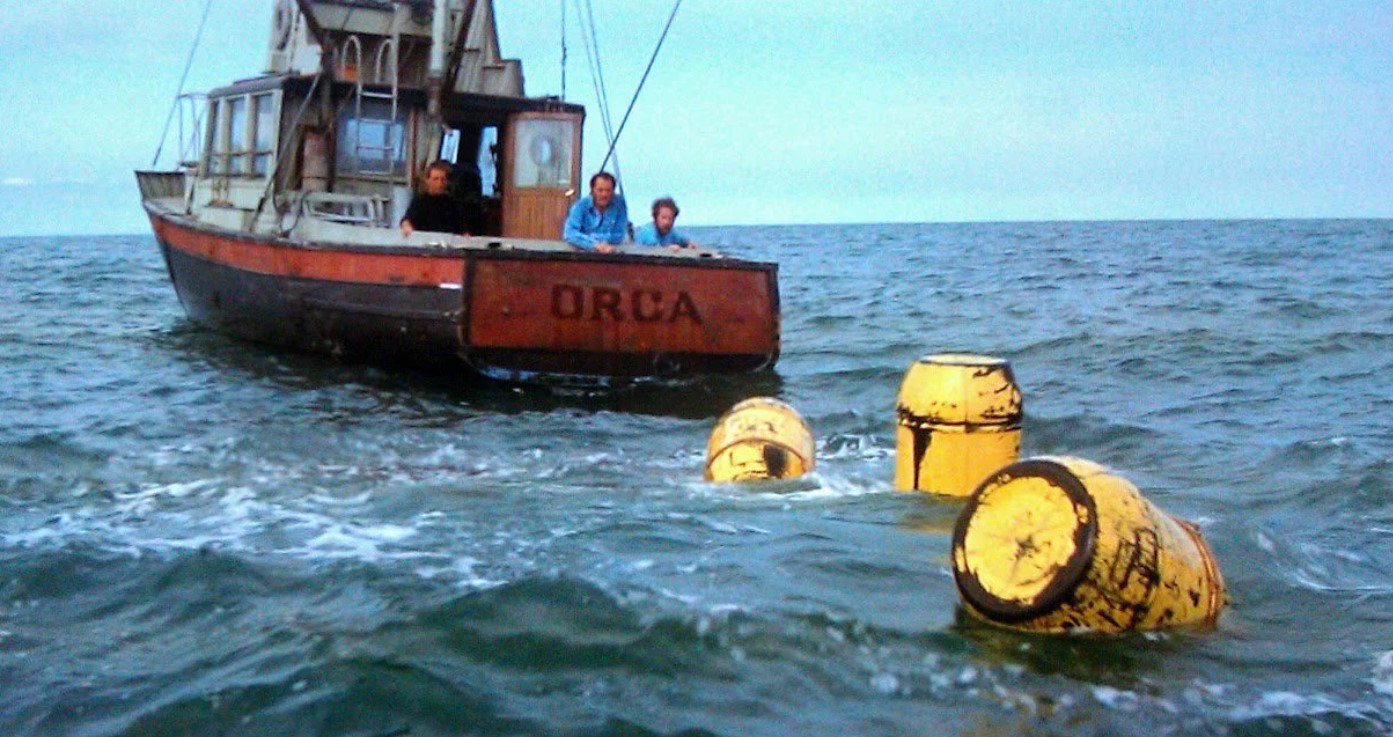
Spielberg wound up minimizing the shark’s time on camera, using a various tricks to suggest the creature’s presence for much of the film (e.g. the floating barrels attached to the creature). This actually worked to the film’s advantage, as the fleeting glimpses of the shark build a far greater feeling of suspense than might have been if we’d seen the creature from the opening minutes.
The first shark killed in the movie was a real specimen caught in Florida
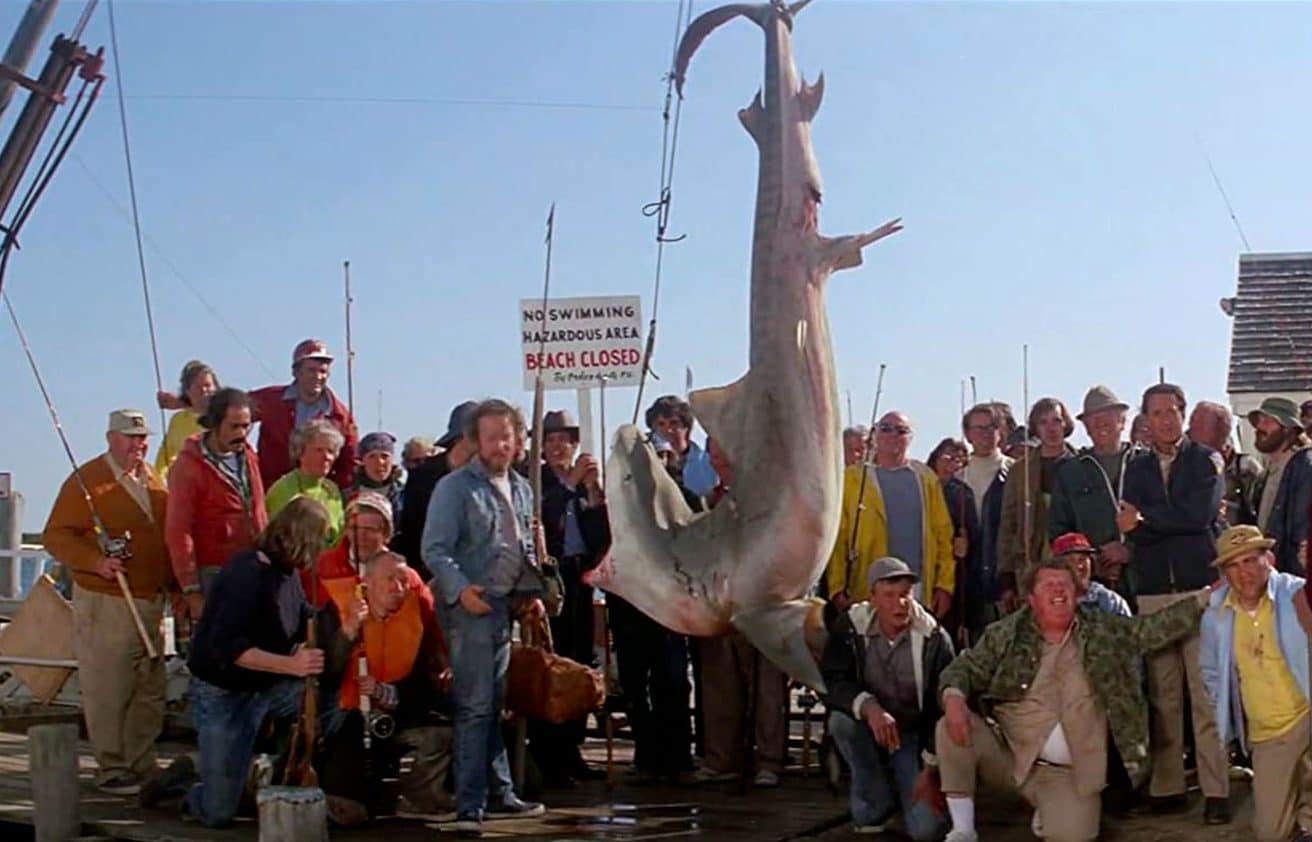
Early in the movie, the townsfolk believe they have killed the man-eating shark and haul it up on the dock. The shark in question looks so real on camera because, well, it was; the scene features the carcass of a genuine tiger shark, which had recently been caught and killed. The scene wasn’t fun to shoot as the fish was already decomposing, and smelled terrible.
Spielberg’s dog appears in the film
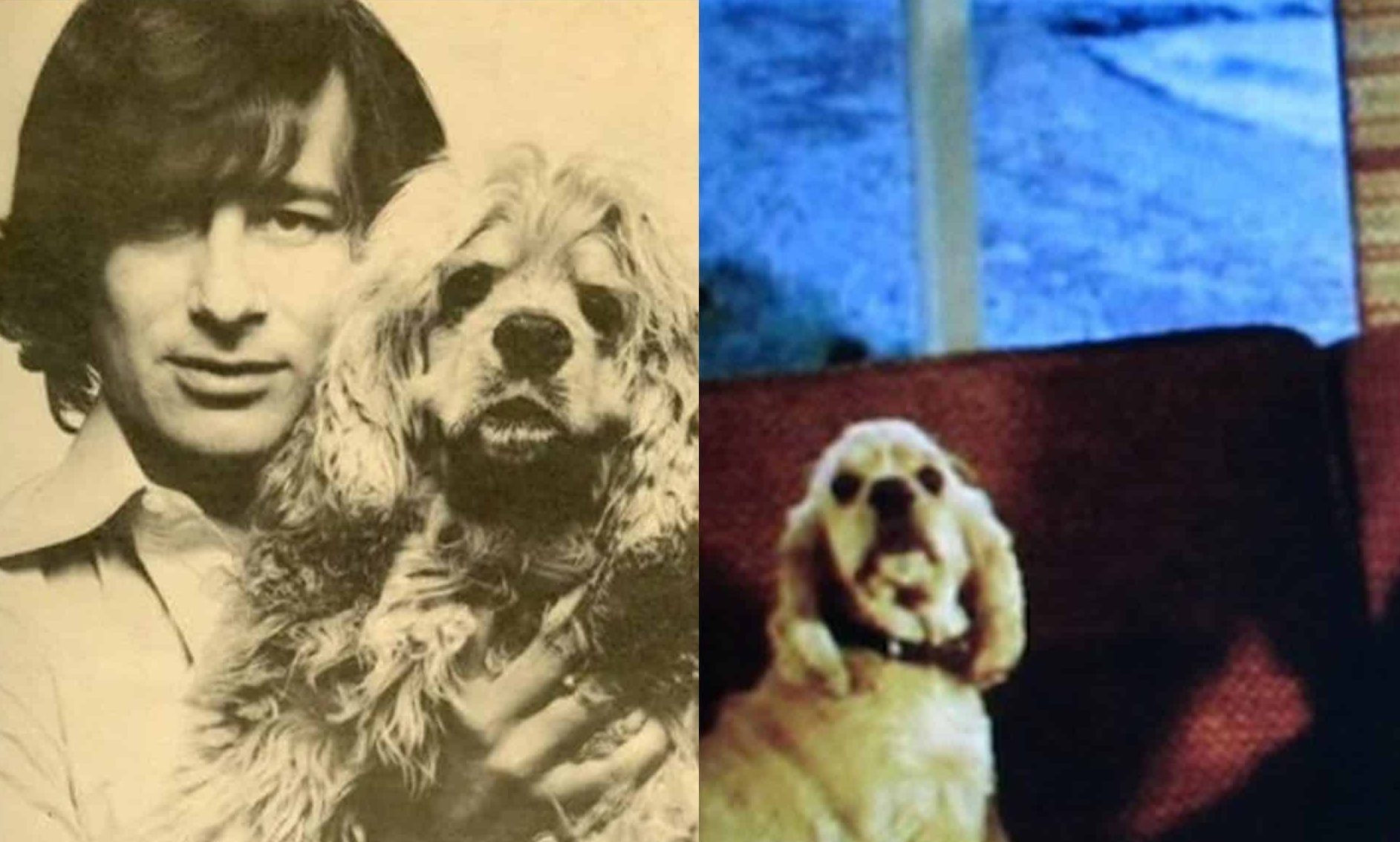
Remember the Brody family’s cute little dog? This sweet cocker spaniel was in fact the pet of none other than Steven Spielberg himself! In reality, the dog was named Elmer and Spielberg featured him in several of his films; Elmer has also starred in Close Encounters of the Third Kind, 1941 and The Sugarland Express.
Two cast members later had a very bizarre reunion

Lee Fierro appears in Jaws as Mrs. Kintner, mother of the poor kid eaten by the shark. Years later, Fierro visited a Martha’s Vineyard seafood restaurant where the menu included an ‘Alex Kintner Sandwich.’ Fierro told restaurant staff she had actually played Alex’s mother, which prompted the owner to run out to meet her: it was Jeffrey Voorhees, the actor who played her son Alex!
Much of the film was nearly destroyed in a boat accident
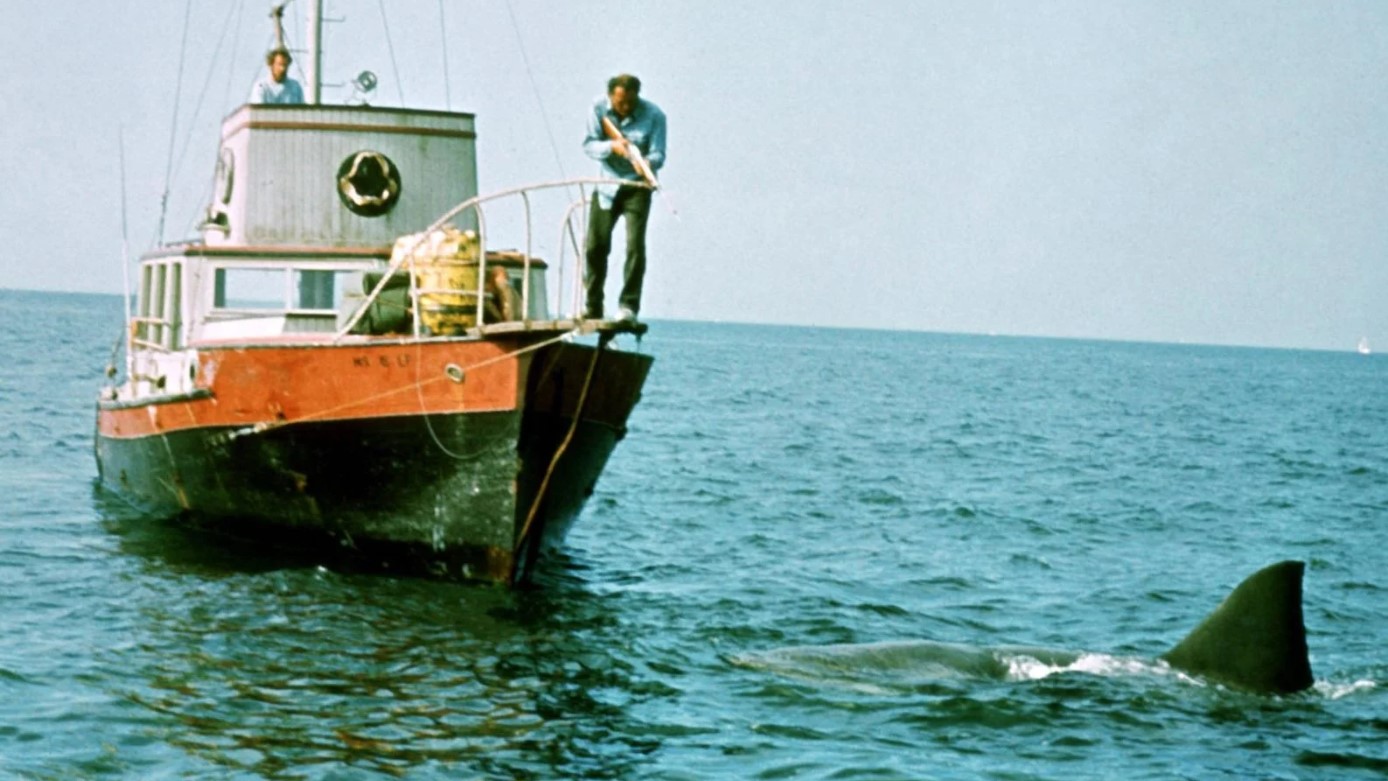
One day, Jaws boat The Orca actually sank during filming. Spielberg screamed over the bullhorn for the safety boats to come and rescue the actors, to which sound engineer John R. Carter reportedly shouted, “F*** the actors, save the sound department!” The camera was entirely submerged, and the crew assumed it was would be ruined. Happily it wasn’t, and they didn’t lose a single shot.
The shark weighed over a ton
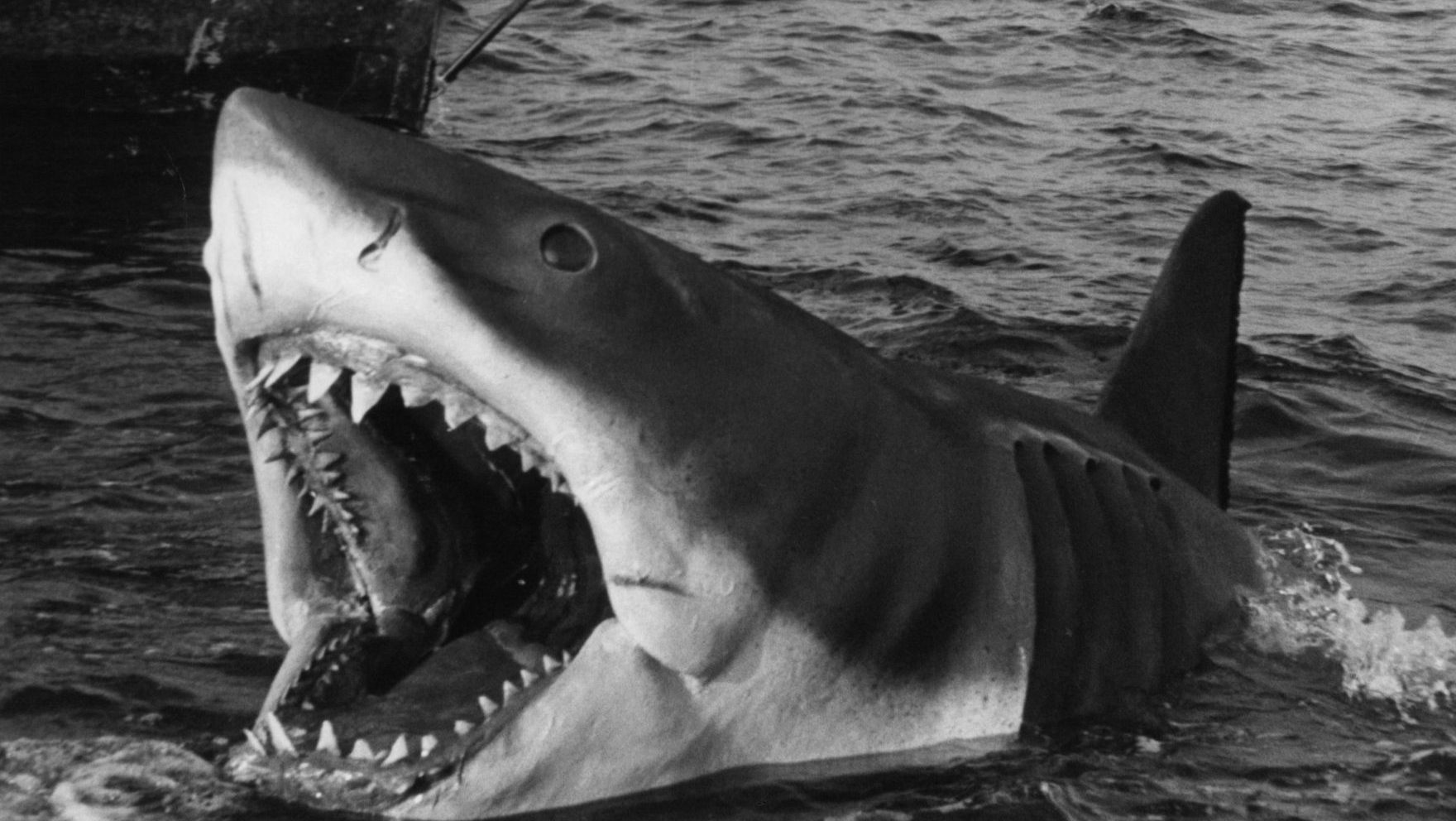
Despite its infamous lack of reliability, Bruce – the primary animatronic shark used to make Jaws – remains one of the most impressive mechanical constructions in the history of cinema. Bruce weighed around 1.2 tonnes, and when it wasn’t being filmed it was allowed to sink and rest on the bottom of the ocean.
Spielberg spoofed Jaws in one of his later films
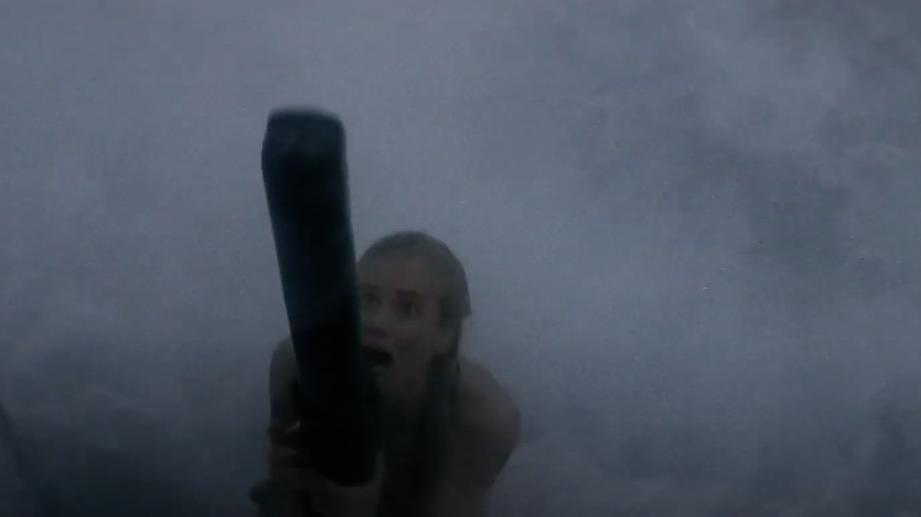
The opening moments of Jaws, in which Susan Backlinie goes for spot of nighttime skinny dipping only to be brutally mauled by the shark, remains one of the most iconic scenes in film history. Spielberg spoofed the scene in his 1979 WWII comedy 1941, with Susan Backlinie once more entering the ocean, only to be hoisted out of the water by a Japanese sub.
Spielberg added a scene based on a moment that occurred between takes
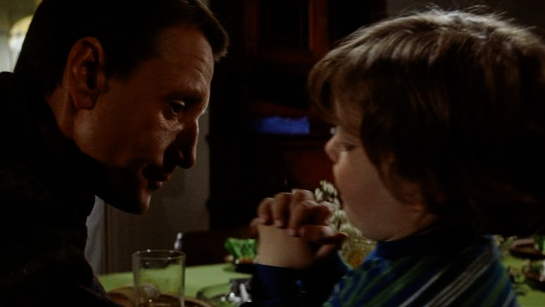
The scene in which Captain Brody’s son Sean imitates his father’s movements at the dinner table was inspired by a moment that Spielberg witnessed between takes. Jay Mello – who plays Sean – was subtly imitating Roy Scheider’s movements, inspiring Spielberg to alter the dinner scene.
The production just avoided a planned actors’ strike
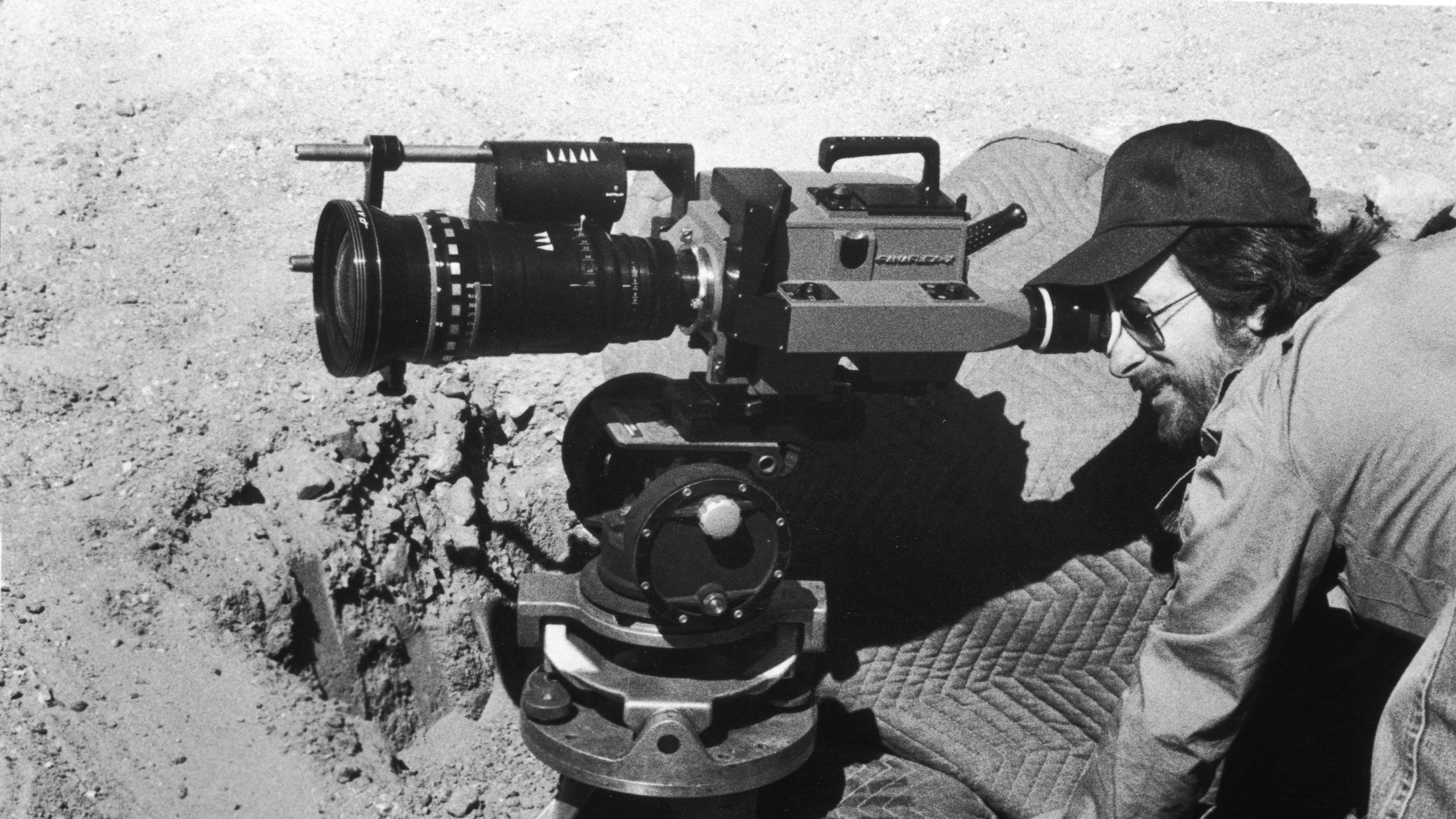
Jaws is set during the summer holidays, but eagle-eyed viewers might spot that the trees in the background of some scenes are devoid of leaves. This is because, in an attempt to avoid being affected by an actors’ strike that was planned to start in July, production was brought forward to May.
There is footage of real sharks in the film
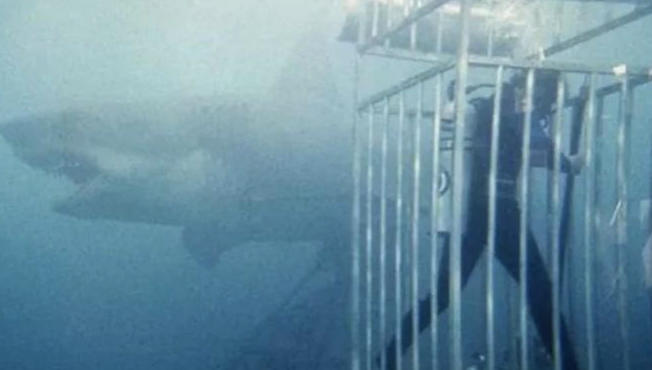
The producers of Jaws insisted that footage of actual sharks be used in the film, to heighten the realism. Shark experts Ron and Valerie Taylor were hired to film 14-foot great whites off the coast of Australia, and stuntman Carl Rizzo – who is just under 5 feet tall – was placed in the cage to create the impression of a larger shark.
Spielberg included an audio reference to his first film in Jaws
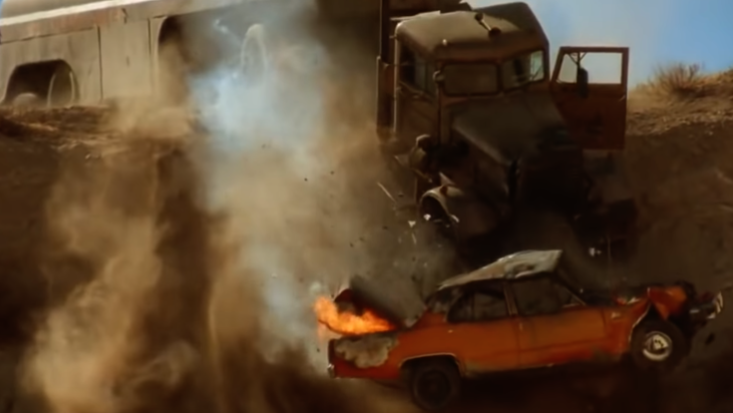
In the climactic sequence of Jaws, just after the shark is spectacularly blown up, a distant roaring noise can be heard. This sound effect was taken directly from Spielberg’s first movie, Duel, and it’s played just after the film’s villain plunges off a cliff in his truck.
Robert Shaw almost passed on the film because he didn’t like the book
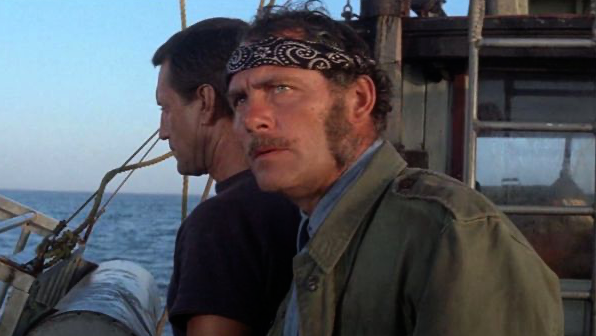
The grizzled captain Quint is one of Robert Shaw’s most iconic characters, but the actor almost passed on the movie because he wasn’t a fan of the book it was based on. Eventually, Shaw was talked round by his wife and secretary, who convinced him that it would be a good career move.
Jaws was the first major film shot at sea
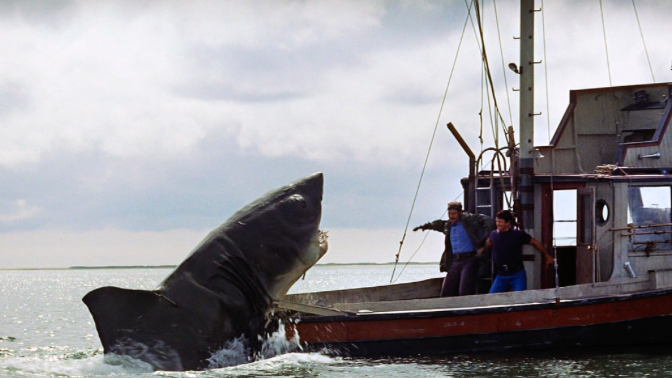
Although Steven Spielberg’s decision to film Jaws in the actual ocean turned production into a nightmare, it did at least set a record: Jaws was the first major motion picture to be filmed at sea. That, however, was likely little consolation to producers when the film went over budget by $5 million.
The ending was meant to be less dramatic
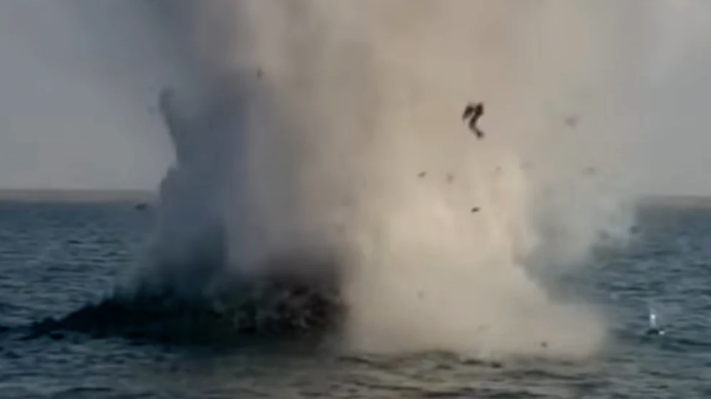
The original ending of Jaws would have seen the shark die after suffering multiple harpoon wounds at the hands of Quint and Brody. The scene was supposed to pay homage to Herman Melville’s classic novel Moby Dick, but Spielberg eventually decided the ending was too subtle and came up with the idea of the shark exploding spectacularly.
Jaws was the first summer blockbuster
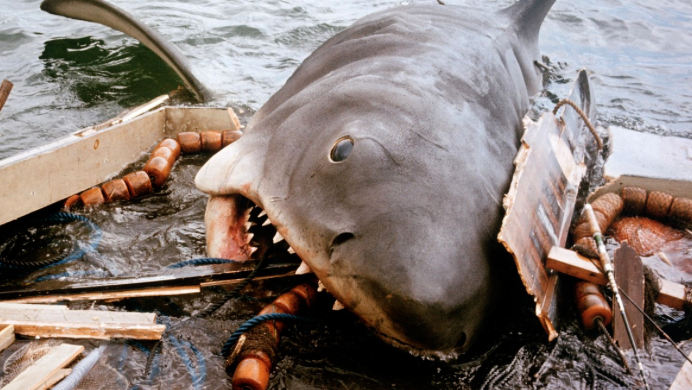
Before Jaws, movies were released at different times around the United States and usually only stayed in theatres for a few weeks before moving on. Jaws, on the other hand, was released simultaneously around the country at the start of summer, and it remained in cinemas for months. This became the standard model for summer blockbusters that is still followed today.
The movie won three Academy Awards

Jaws was a resounding commercial and critical success, and there was little surprise when it picked up a number of Oscar nominations. It went on to win three, for Best Film Editing, Best Original Sound and – of course – Best Original Dramatic Score. Spielberg, however, was reportedly miffed that he didn’t even get nominated for Best Director.
Jaws has been copied repeatedly
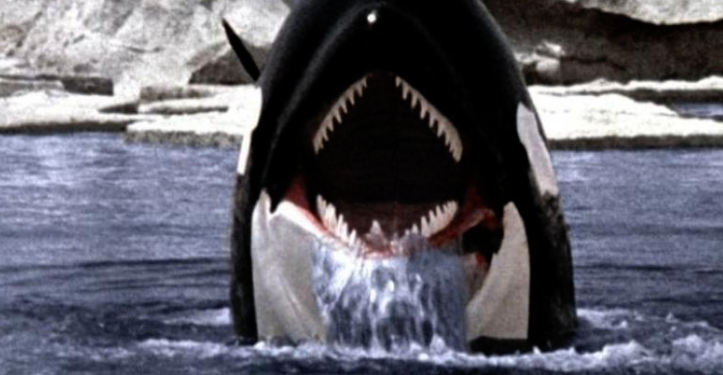
Given how successful the film was, Jaws has unsurprisingly been imitated ad nauseam by filmmakers and studios trying to cash in on a winning formula. Notable examples include Piranha, Grizzly and Orca, and Ridley Scott’s Alien won studio backing after it was pitched to producers as “Jaws in space.”
Production took more than twice as long than was planned
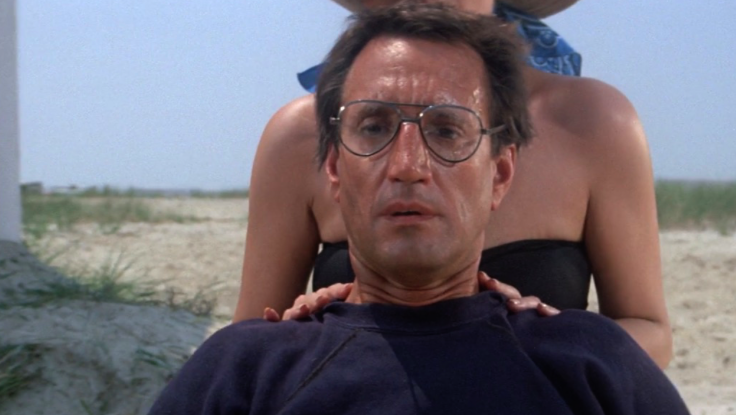
The production of Jaws was notoriously challenging, with problems ranging from the shark breaking down to Robert Shaw’s alcoholism leading to general chaos. This translated into the shoot dragging on and running well over schedule, with what was supposed to be a 65 day production eventually taking 159 days to complete.
One line inspired the name of a production company
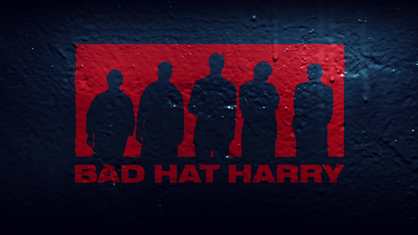
During an early scene in the film, Captain Brody gently teases an elderly man, telling him “That’s some bad hat, Harry.” If that rings a bell, it might be because you’ve watched House, most of the X-Men films, or any of the other movies and TV shows produced by Bad Hat Harry Productions, a company whose name was inspired by Brody’s quip.
There’s a Mythbusters episode about Jaws
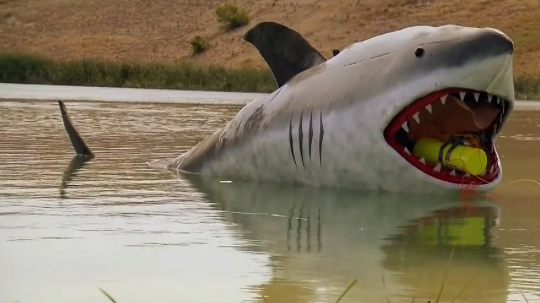
In an episode of beloved TV show Mythbusters, show hosts Adam Savage and Jamie Hyneman tested the plausibility of a number of narrative elements from Jaws. Amongst these was whether or not a shark would explode if a scuba tank in its mouth was shot (it wouldn’t) and whether a great white shark could ram a hole in a wooden boat (it could).
The scene with Ben Gardner’s head was filmed in the editor’s pool
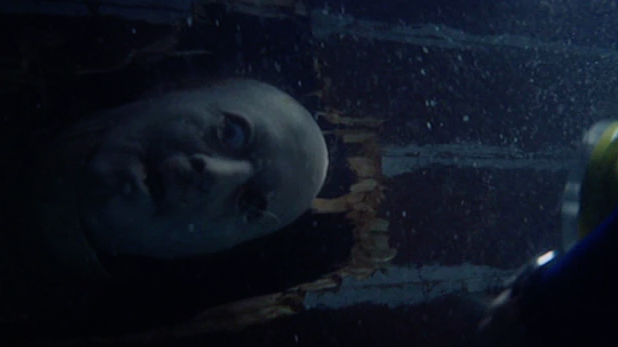
Easily the eeriest moment in Jaws is when Hooper is examining the wreckage of Ben Gardner’s boat, only to be startled when Ben’s head floats up out of the gloom. The scene was a late addition to the film, and Spielberg shot it in the swimming pool of Verna Fields, the movie’s editor.
Spielberg almost didn’t direct the film
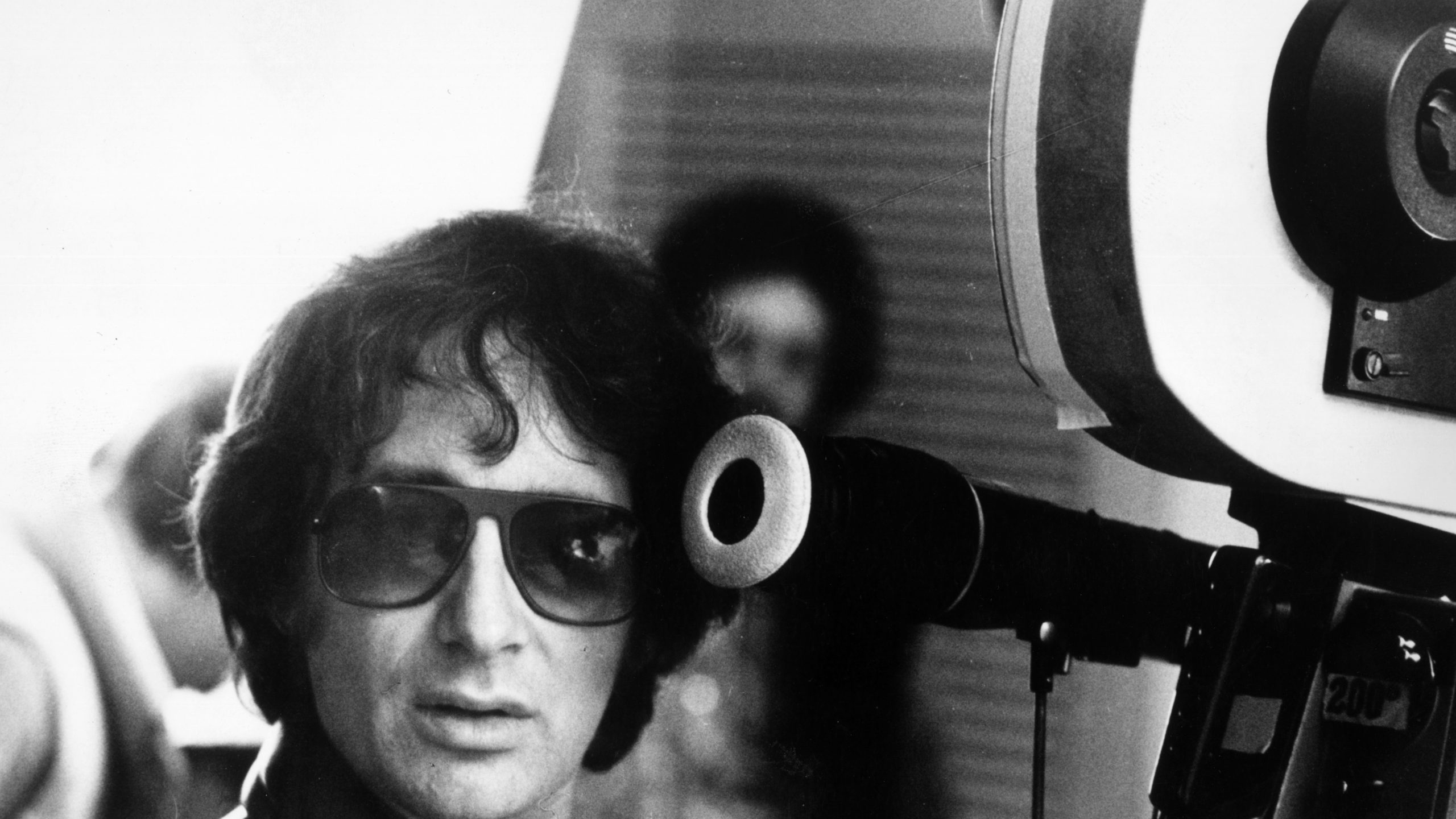
Jaws turned Steven Spielberg into a household name, and set him on the path to becoming one of the most successful directors of all time. He almost didn’t take the movie, however, because he was worried it was too similar to his first film and would pigeonhole him before his career had properly started, stating, “Who wants to be known as a shark and truck director?”
Jaws was originally meant to be released at Christmas
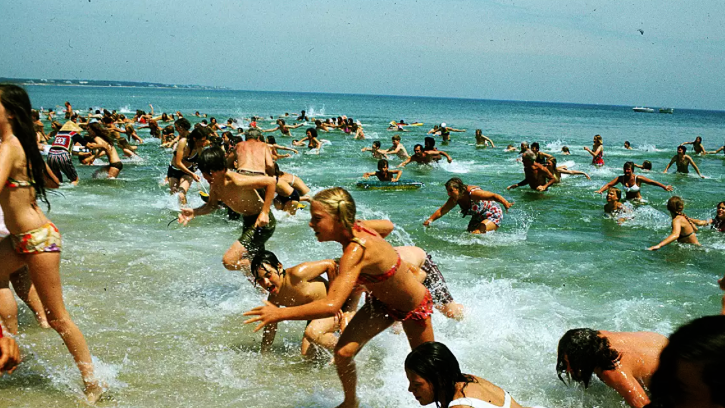
Jaws is the definitive summer blockbuster, but it was actually originally supposed to be released around Christmas in 1974. This was because, at that time, most major hits were released during the Christmas holiday. Ultimately, the choice to delay the release the film – which is itself set during the summer holidays – paid dividends.
Author Peter Benchley makes a cameo in the film
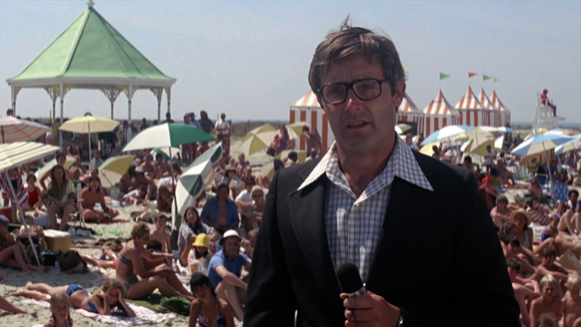
Peter Benchley, the author of Jaws, makes a cameo in the movie as the news reporter on the beach who addresses the camera after the first shark killings make national news. The reason Benchley looks like such a natural is that, before penning Jaws, he was a reporter for the Washington Post.
The film’s iconic line had to be edited to make it louder
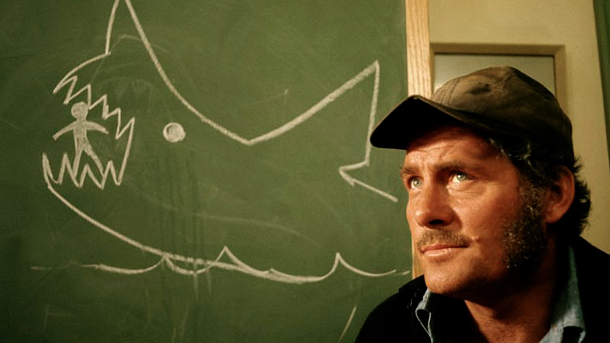
Roy Scheider’s “You’re gonna need a bigger boat” line is one of the most recognisable moments from the entire film, but during test screenings the dialogue was drowned out by audiences’ screaming. Spielberg subsequently had the scene reedited to make the line louder, so that it couldn’t be drowned out by terrified moviegoers.
Roy Scheider got into a fight with the director of Jaws 2
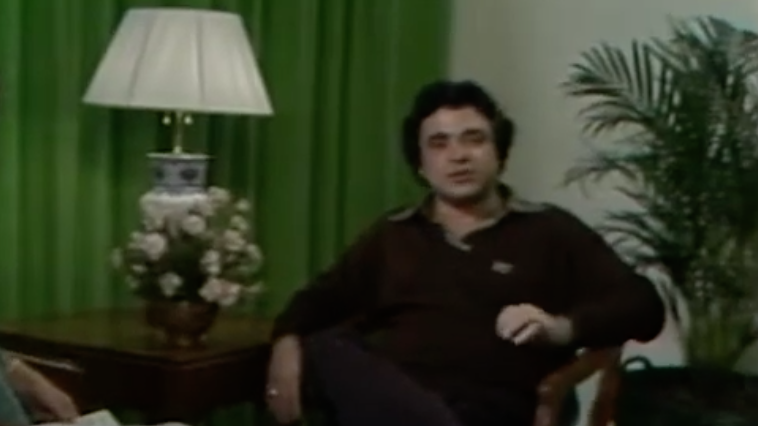
Compounding Roy Scheider’s resentment at being forced into making Jaws 2, the production was incredibly gruelling for the actor, involving endless takes of him being thrown into water. Eventually, producer David Brown insisted that Scheider and director Jeannot Szwarc air out their grievances with one another. This backfired spectacularly when the exchange led to a physical altercation.
John Landis helped build one of the Jaws sets
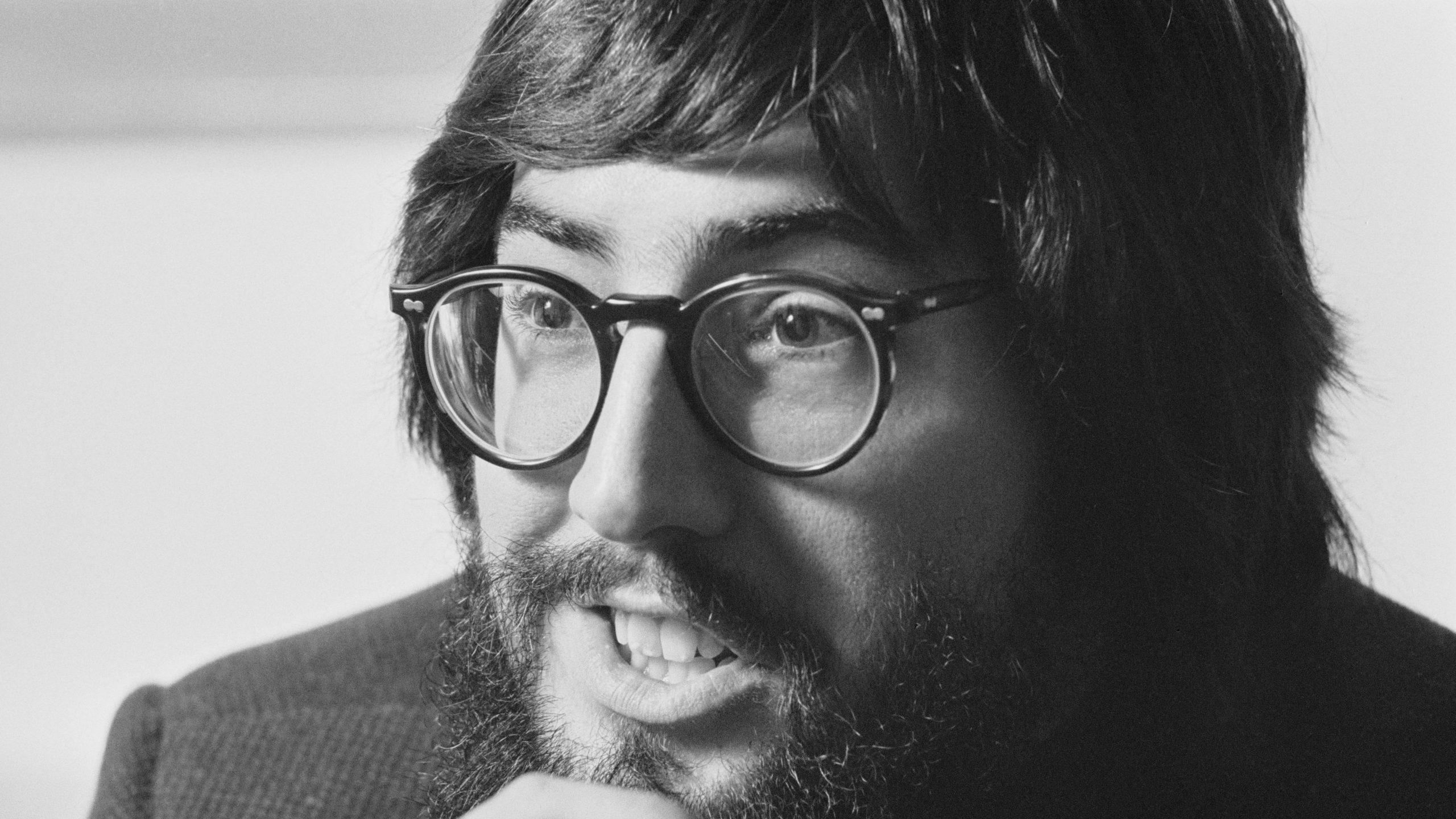
During production, John Landis – then a young, relatively unknown filmmaker – paid a visit to one of the sets. Landis was quickly roped into helping out with building the wooden pier which two men try to bait the shark from in the film. In the following years, Landis would become a well-known director himself, with credits including An American Werewolf in London and The Blues Brothers.
The original story involved the mob
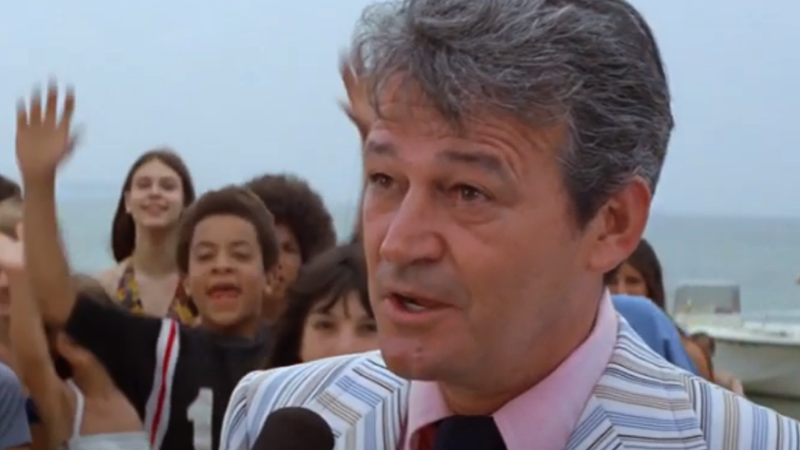
One of the key narrative elements of Jaws is the fact that local businesses – afraid of losing customers – exert pressure on the mayor to keep the beaches open, directly leading to more deaths. In the book, however, it’s the Mafia that pressures the mayor into not shutting the beach, because they’re worried it will hurt their real estate investments.
The number plate found in a shark has been used in other films
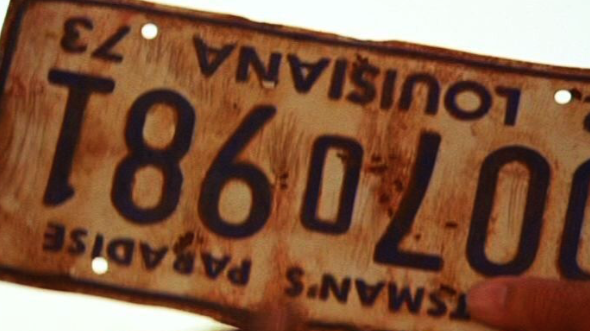
In the film, after a large tiger shark is mistakenly assumed to be the man-eater and killed, its stomach is cut open to reveal, amongst other items, a number plate. This number plate – 007 0 981 – which was itself a nod to James Bond, also makes an appearance in Deep Blue Sea and Ralph Breaks the Internet.
Verna Fields was referred to by the crew as “mother cutter”
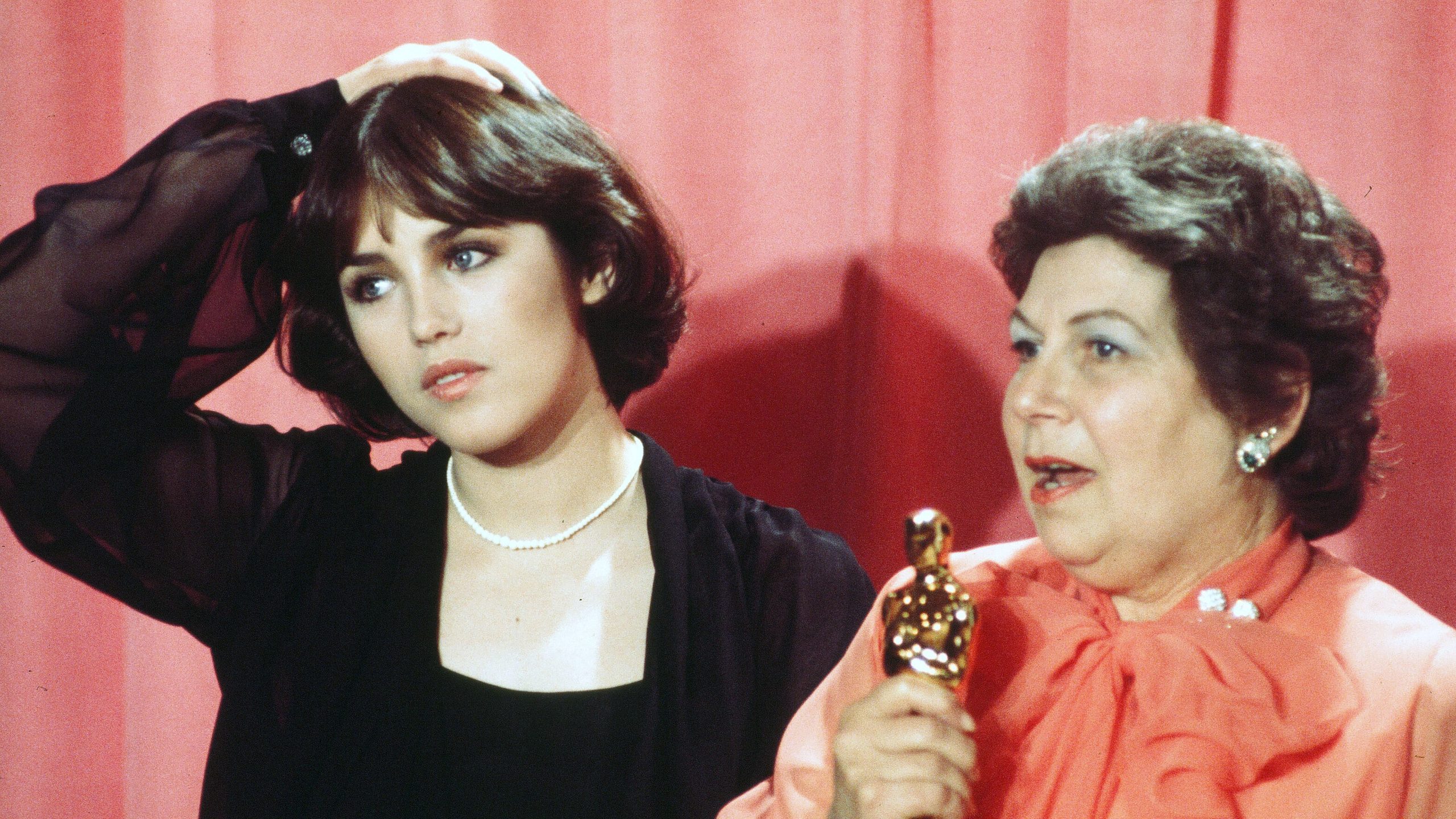
Verna Fields was an award-winning editor who worked with Steven Spielberg on a number of films, including Jaws. As well as editing the movie, Fields also took it upon herself to cook for the cast and crew, earning her the affectionate nickname of “mother cutter.”
The mechanical shark in Jaws 2 was terrible
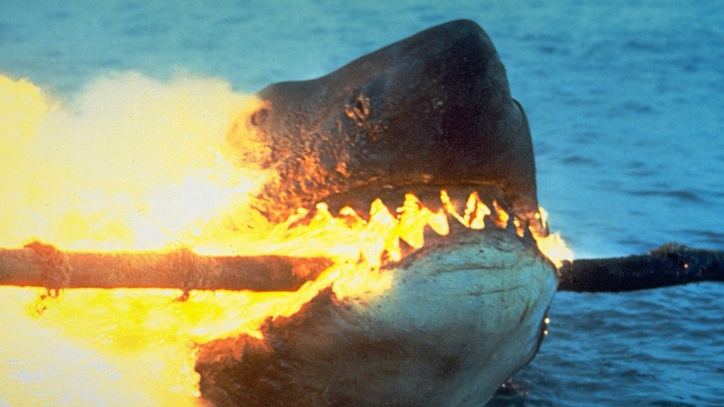
Production of the first Jaws film was made incredibly challenging by the unreliability of the animatronic shark, Bruce, and the sequel was plagued by the same problem. This time, the shark was built out materials that corroded almost instantly upon being exposed to seawater, as a result of which the mouth would rarely close. This is why the shark is gaping throughout most of the film.
Spielberg used to sneak into screenings to watch the audience
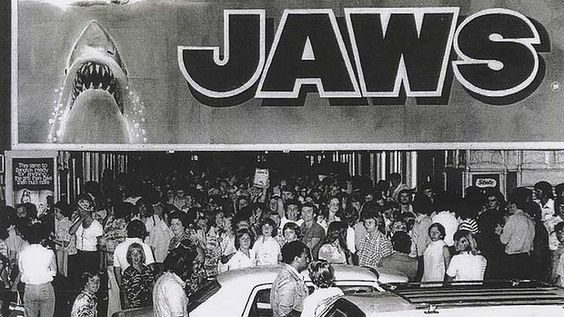
While the shark appearing behind Brody was supposed to be the scariest moment in the film, it quickly turned out that the loudest screams went to the shot of Ben Gardner’s head startling Hooper. After the film’s release, Steven Spielberg and screenwriter Carl Gottlieb regularly sneaked into theatres to watch the effect the scene had on audiences.
Jaws has been preserved as culturally significant

In 2001, Jaws was named by the Library of Congress as a culturally significant piece of work and selected for preservation at the National Film Registry. This is a rare honour, and puts Jaws in the company of films including Casablanca, 2001: A Space Odyssey, Citizen Kane and The Maltese Falcon.
One of the sequels won a Razzie
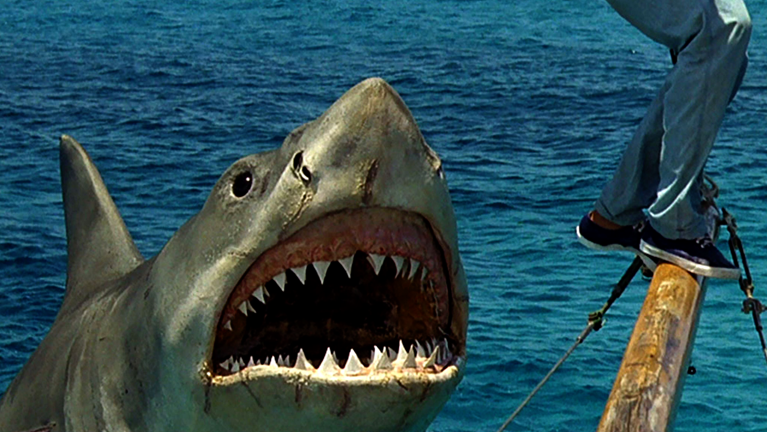
Jaws is often considered a cinematic masterpiece, as evidenced by the three Academy Awards it picked up. Its sequels, however, have fared less well. While pretty much all of the subsequent movies in the franchise are considered trash, the fourth sequel – titled Jaws: The Revenge – is the worst of the bunch, earning seven Razzie nominations and ‘winning’ one for Worst Visual Effects.